“Die Another Day” (from ‘Die Another Day,’ 2002)
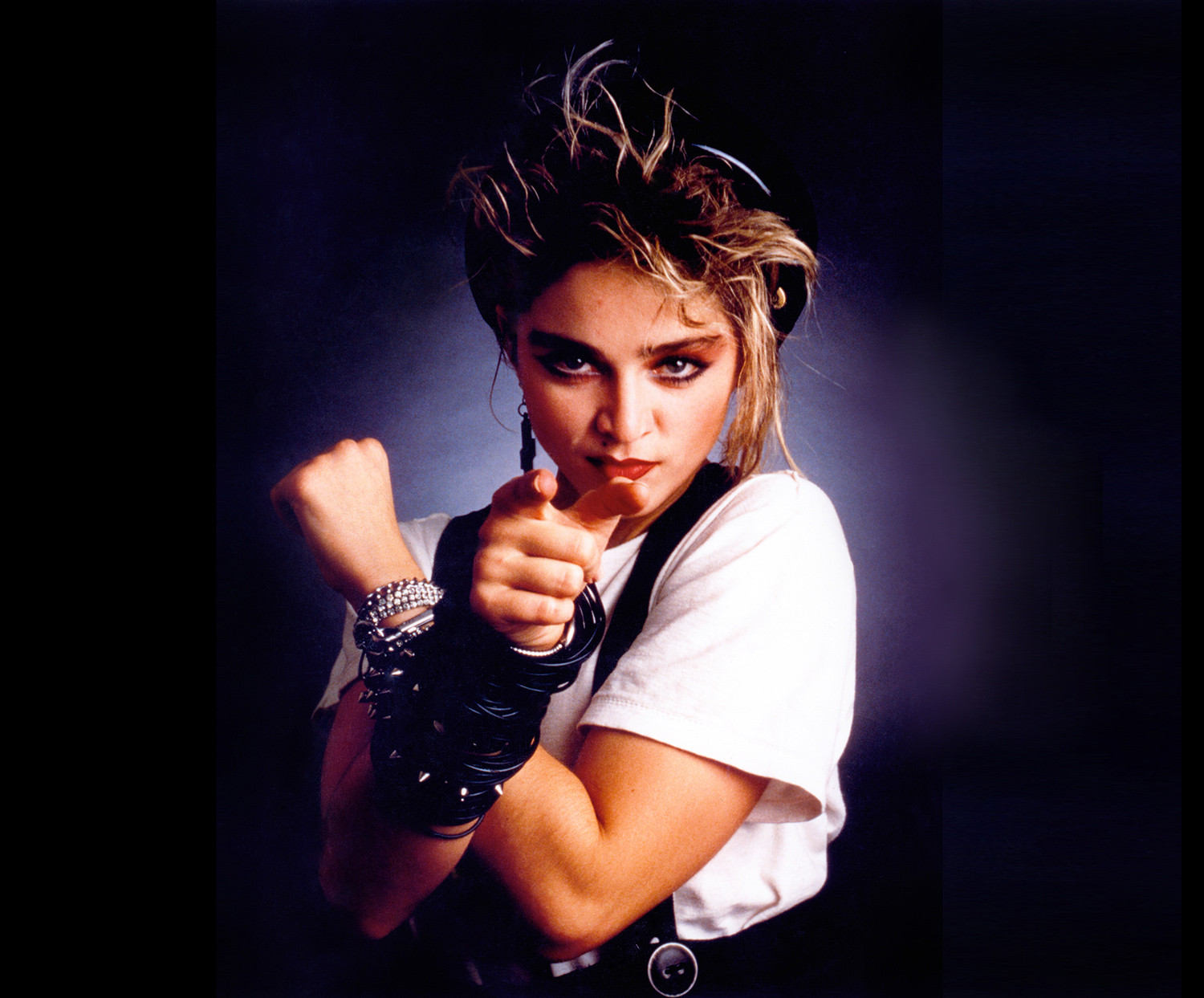 Madonna in Die Another Day movie, fencing scene with Pierce Brosnan
Madonna in Die Another Day movie, fencing scene with Pierce Brosnan
Madonna’s foray into the James Bond universe with “Die Another Day” showcased her ability to blend into different musical landscapes. Beyond her cameo as a fencing instructor in the film starring Pierce Brosnan, Madonna, alongside Mirwais, crafted the theme song. Initially, MGM executives sought a more traditional Bond sound, leading Madonna and Mirwais to collaborate with French composer Michel Colombier. Colombier infused a “film-score-esque” quality, incorporating sixty live strings that were then digitally manipulated, creating a unique sonic texture. The result was a Bond theme that resonated with contemporary audiences, becoming one of the most successful in recent times, proving Madonna’s adaptability in the realm of movie soundtracks and theme songs.
“Act of Contrition” (from ‘Like a Prayer,’ 1989)
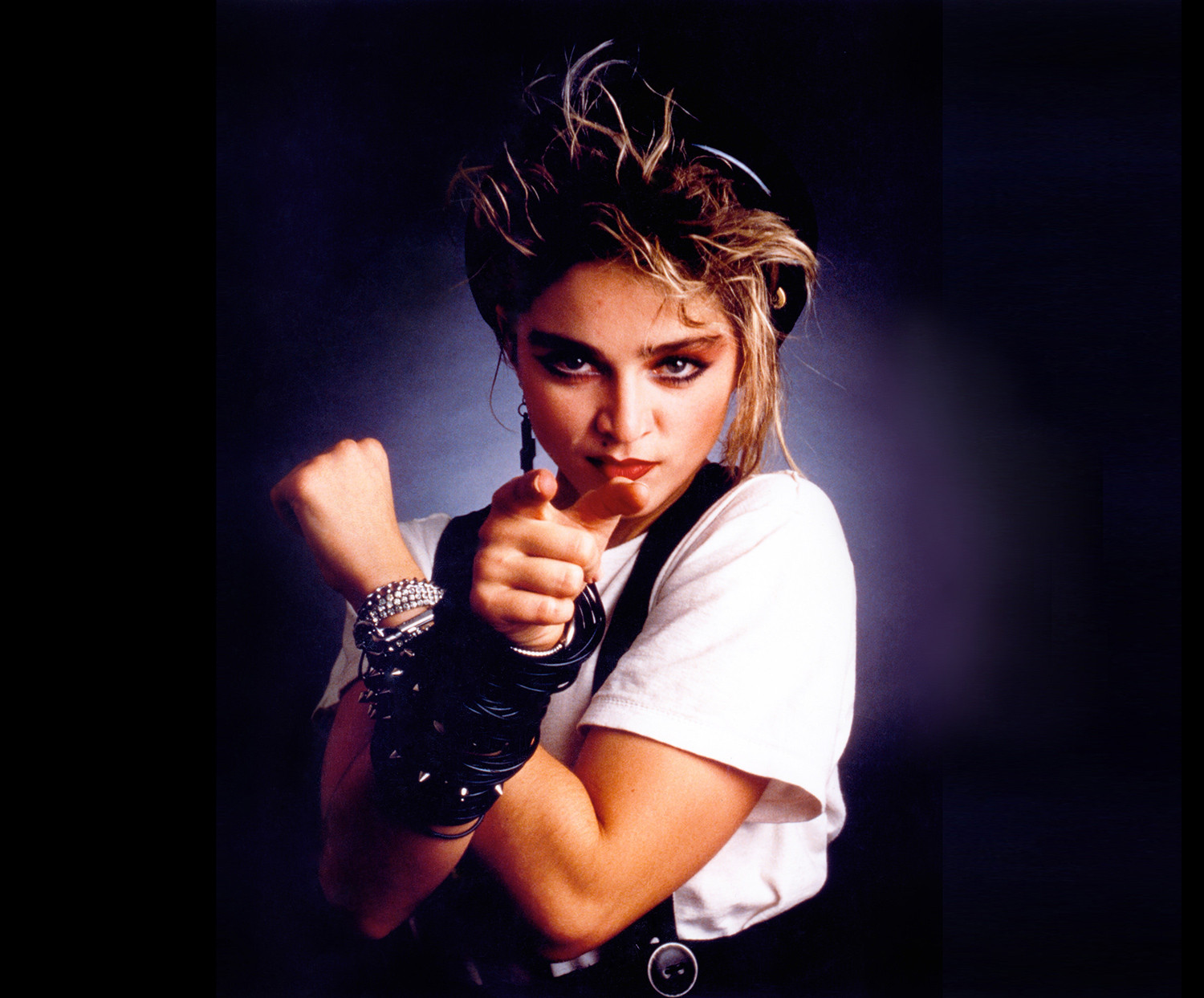 Madonna Like a Prayer album era, artistic black and white portrait
Madonna Like a Prayer album era, artistic black and white portrait
Concluding the deeply personal and Catholic-themed album “Like a Prayer,” “Act of Contrition” is a bold and experimental track. It features an intense, uncredited guitar solo by Prince and a reversed tape loop of the Andraé Crouch Choir from the album’s title track. Over this sonic backdrop, Madonna recites the Roman Catholic prayer of confession and repentance, a spontaneous studio creation. Madonna described the song as entirely improvised, stating, “That was totally conceived of in the studio. I just started fooling around. Whatever was in my head. It’s totally unedited.” This raw and unfiltered approach exemplifies the album’s themes of introspection and spiritual exploration, making it a powerful closing statement to one of Madonna’s most iconic albums.
“Me Against the Music” (from ‘In the Zone,’ 2003)
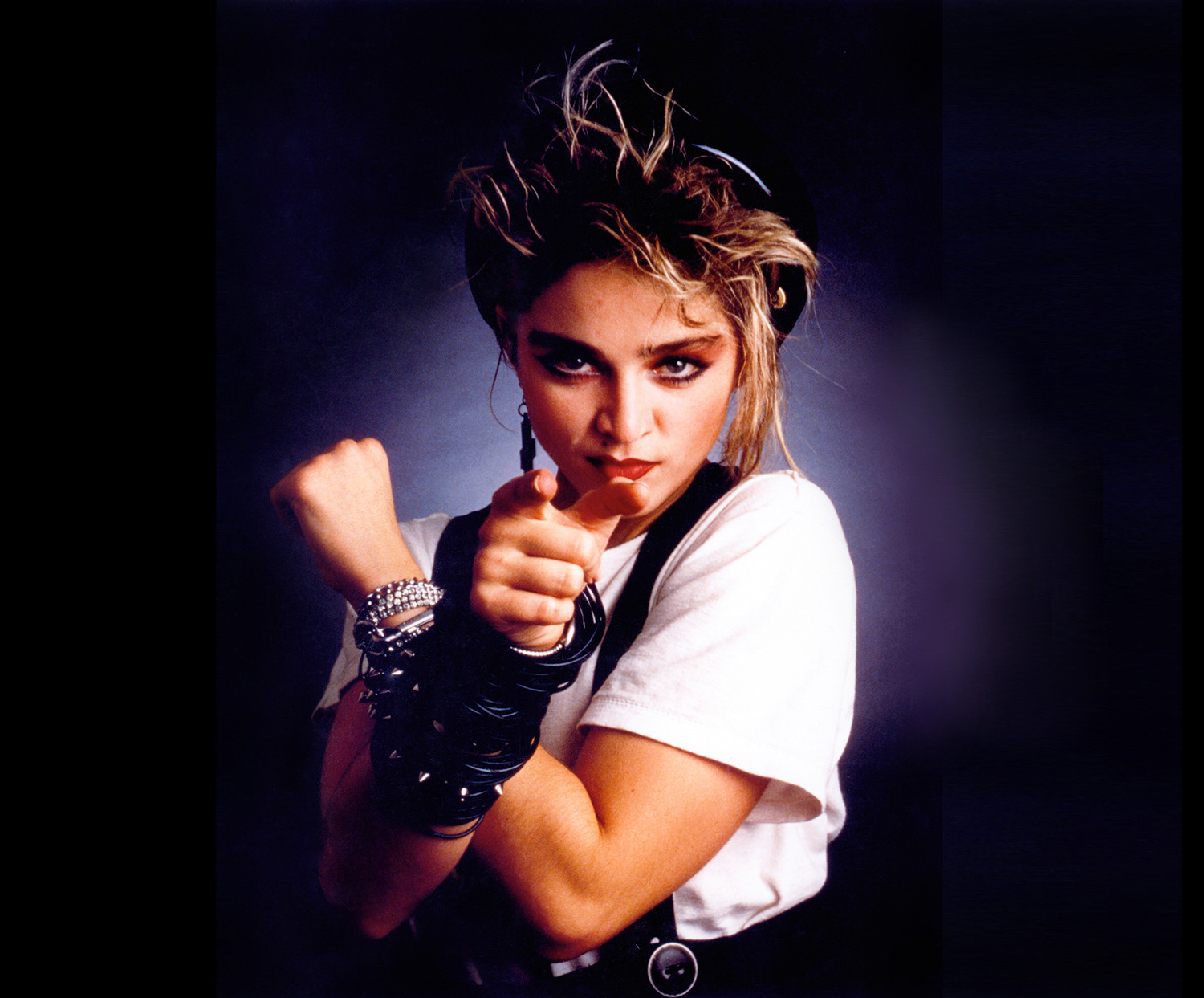 Madonna and Britney Spears performing Me Against the Music at MTV VMAs 2003
Madonna and Britney Spears performing Me Against the Music at MTV VMAs 2003
“Me Against the Music” is notable not just for its infectious dance-pop energy, but also for its iconic collaboration between Madonna and Britney Spears. Beyond their memorable kiss at the 2003 MTV Video Music Awards, Spears played Madonna a track from her upcoming album, In the Zone. Madonna proposed turning it into a duet, resulting in this high-energy song co-written by The-Dream and Tricky Stewart. The song is an anthem of dance floor liberation, accompanied by a visually striking music video featuring Madonna and Spears engaging in a playful and athletic dance-off. This collaboration cemented Madonna’s continued relevance in pop music and her willingness to work with younger artists, bridging generational gaps in pop culture.
“Bedtime Story” (from ‘Bedtime Stories,’ 1994)
 Madonna in Bedtime Story music video, surreal and artistic imagery
Madonna in Bedtime Story music video, surreal and artistic imagery
“Bedtime Story” stands out in Madonna’s discography for its unique collaboration with Icelandic artist Björk. Björk, a long-time admirer of Madonna, contributed to the song’s lyrics, aiming to write words she’d always wanted to hear Madonna express. The result is an atmospheric and house-influenced track that delves into powerful, ineffable emotions. Madonna sings of “Traveling, leaving logic and reason,” exploring feelings that transcend verbal expression. This song marked a departure for Madonna, venturing into electronic dance music (EDM) and foreshadowing her future sonic explorations in genres like electronica and house music.
“Papa Don’t Preach” (from ‘True Blue,’ 1986)
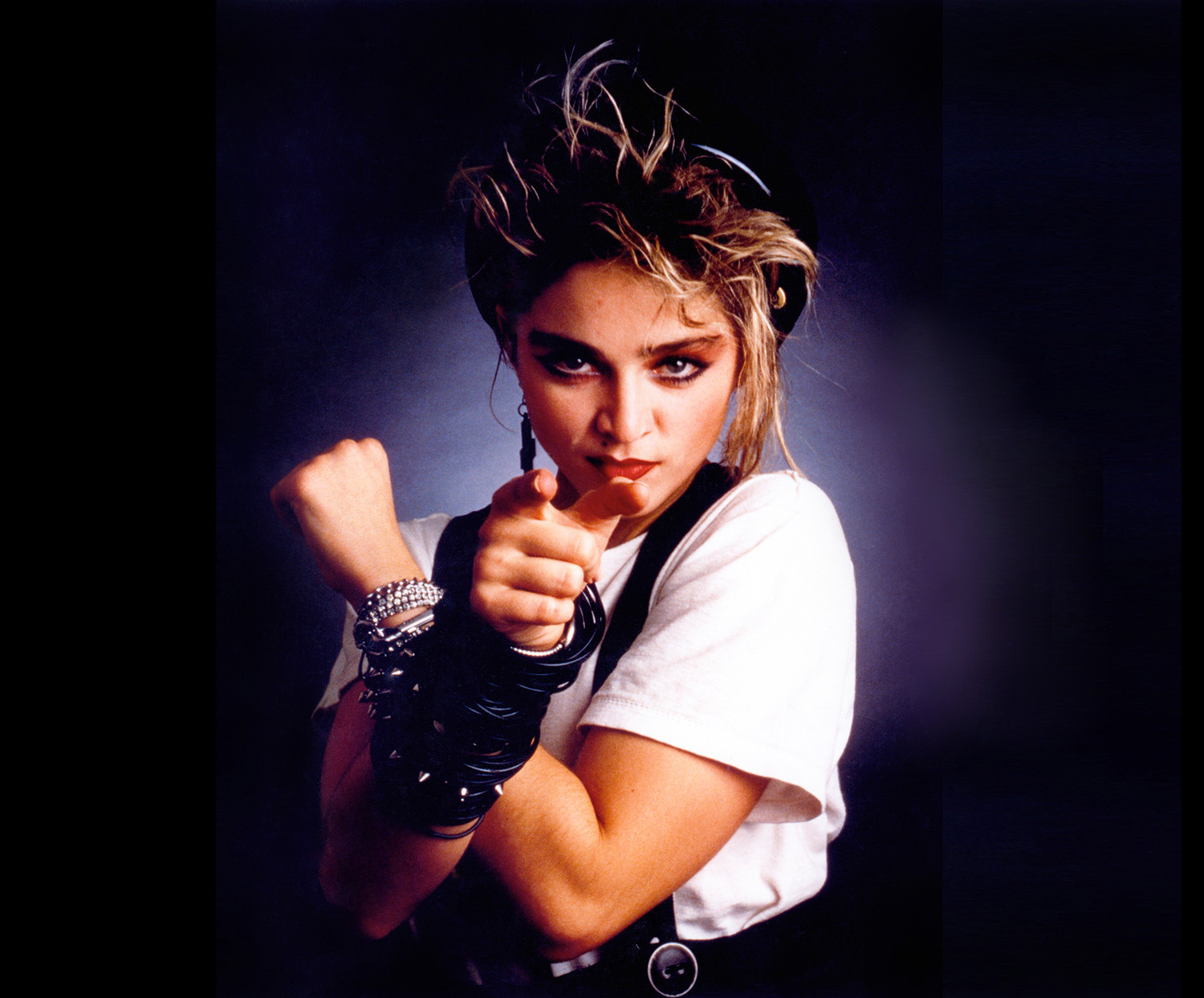 Madonna True Blue era, performing Papa Don't Preach on stage
Madonna True Blue era, performing Papa Don't Preach on stage
“Papa Don’t Preach” was a controversial yet commercially successful single from the True Blue album. It’s the only song on the album that Madonna didn’t significantly contribute to writing. Initially hesitant, Madonna connected with the song’s narrative about a young woman’s relationship with her father and her assertion of autonomy. She told The New York Times it was “really about a girl…[who] has a very close relationship with her father and wants to maintain that closeness,” viewing it as “a celebration of life.” While some conservatives attempted to interpret it as a pro-life anthem, Madonna clarified that the song was about female autonomy and a woman’s right to choose, famously stating, “Ronald Reagan is one papa who shouldn’t preach” in Rolling Stone.
“This Used to Be My Playground” (from ‘Barcelona Gold,’ 1992)
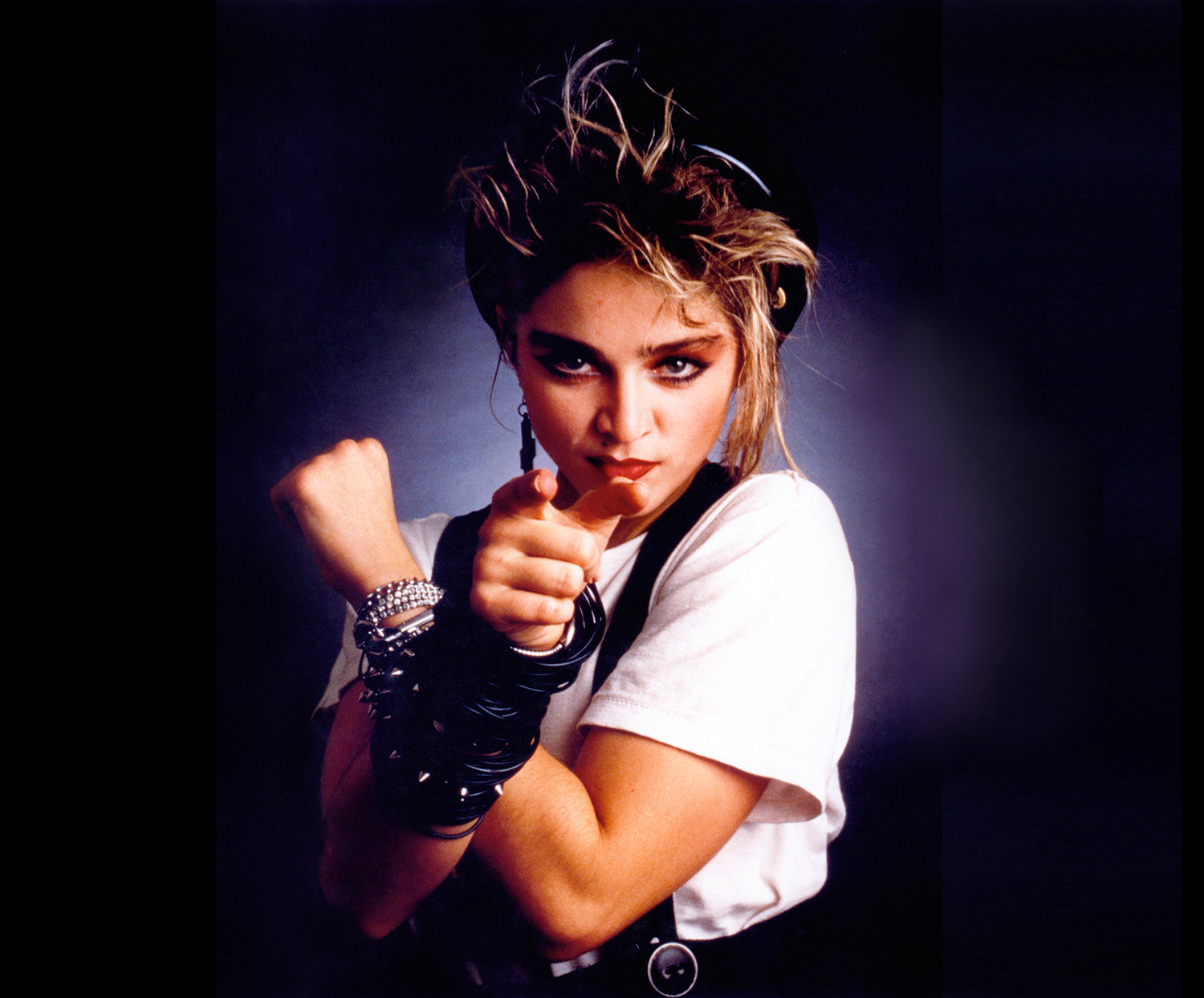 Madonna in A League of Their Own movie, baseball uniform and cap
Madonna in A League of Their Own movie, baseball uniform and cap
“This Used to Be My Playground” was created for the soundtrack of the movie A League of Their Own, where Madonna also starred alongside Tom Hanks and Rosie O’Donnell. This sentimental ballad was crafted in just two days during the Erotica sessions. Madonna developed the melody by humming over computer-generated chords and even rewrote the string arrangement while an orchestra waited. The song became a major hit, solidifying Madonna’s position as a chart-topping artist and breaking her tie with Whitney Houston for the most Number One singles by a female singer at the time. It showcased her ability to quickly create impactful music for film projects.
“Hollywood” (from ‘American Life,’ 2003)
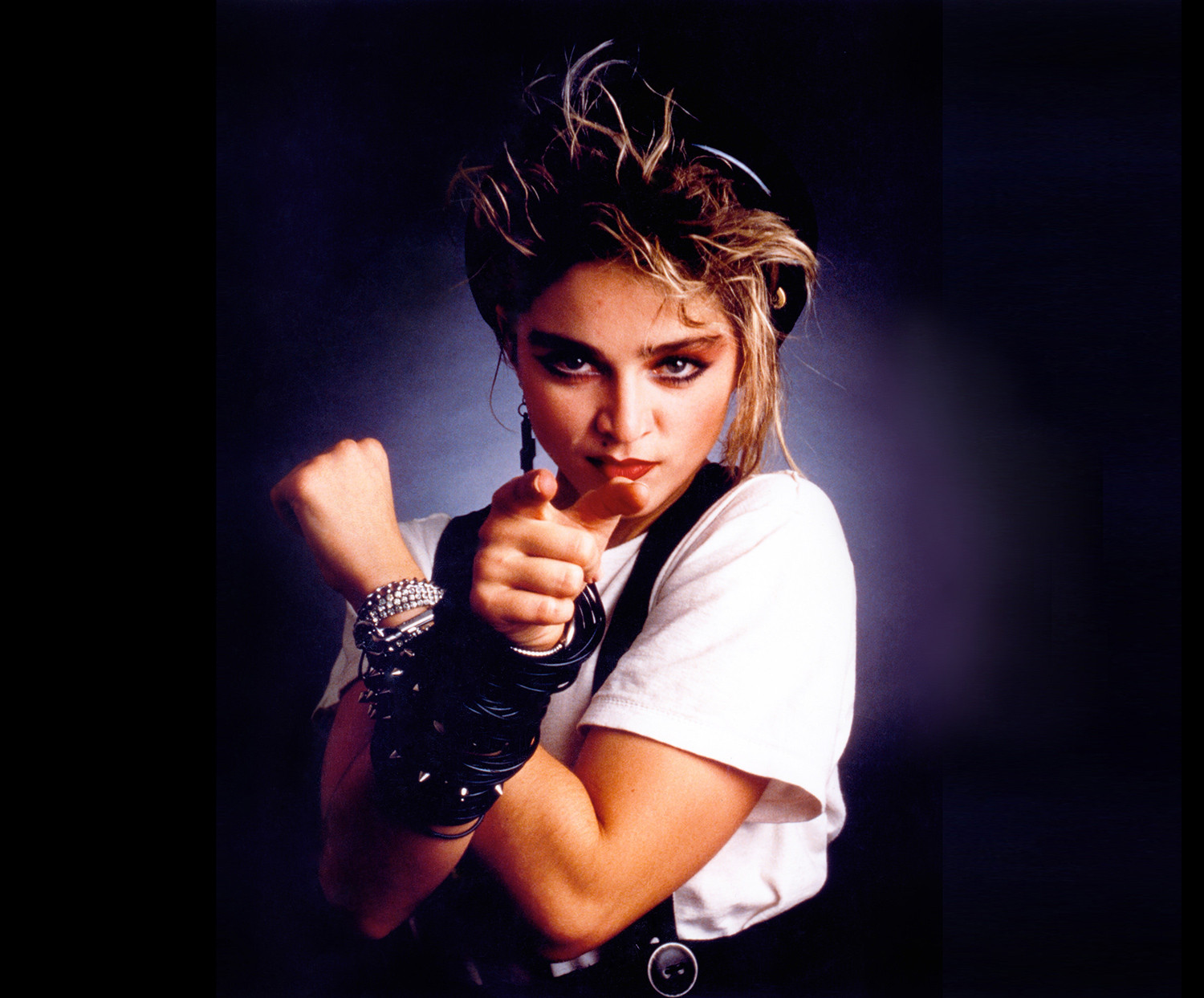 Madonna American Life album cover, military-inspired fashion
Madonna American Life album cover, military-inspired fashion
From the American Life album, “Hollywood” is a commentary on the allure and superficiality of fame and the entertainment industry. While American Life was considered less commercially successful compared to its predecessors Ray of Light and Music, “Hollywood” remains a powerful track. It features an acoustic guitar riff combined with a rigid beat, as Madonna reflects on the “city of dreams, the city of distraction, the city of superficiality.” She described Hollywood as a place where one can “lose your memory… You can lose everything. You can lose yourself,” highlighting the potentially destructive nature of the pursuit of fame and fortune in Hollywood.
“Ghosttown” (from ‘Rebel Heart,’ 2015)
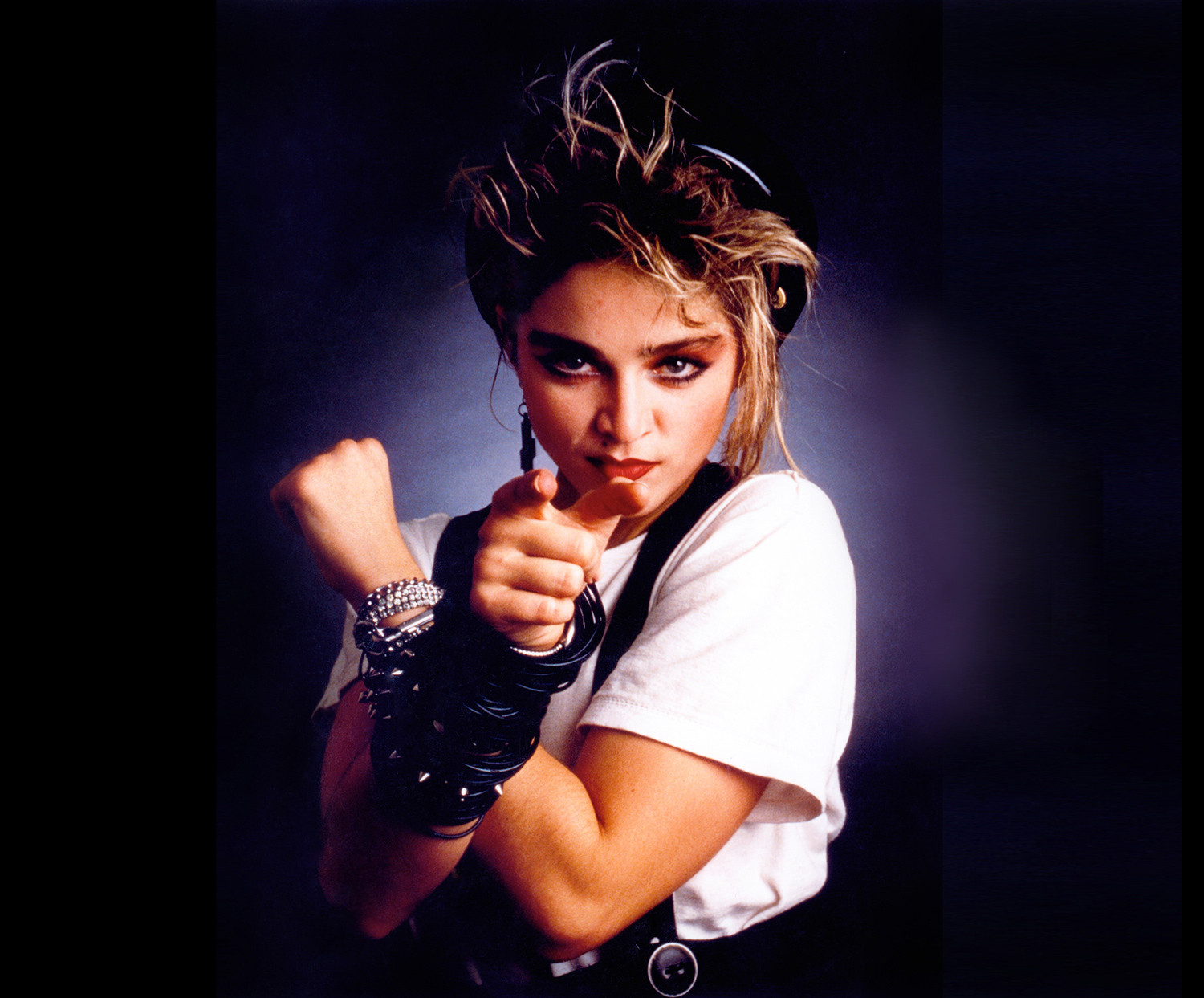 Madonna Rebel Heart album era, black and white portrait with dramatic makeup
Madonna Rebel Heart album era, black and white portrait with dramatic makeup
“Ghosttown,” from the Rebel Heart album, explores themes of resilience and partnership in the face of societal collapse. This lush and emotive track is about staying committed to a relationship even after civilization crumbles. Madonna explained the song’s meaning, stating, “At the end of the day, if we run out of oil and we don’t have electricity and we don’t have all the modern conveniences, and we have no phones and computers, all we’re going to have is each other. That song’s about recognizing that.” Co-written with Sean Douglas, who had previously worked on Jason Derulo’s hit “Talk Dirty,” “Ghosttown” blends pop sensibilities with a poignant message about human connection in a dystopian setting, showcasing Madonna’s ability to address deeper themes in her music.
“Bad Girl” (from ‘Erotica,’ 1992)
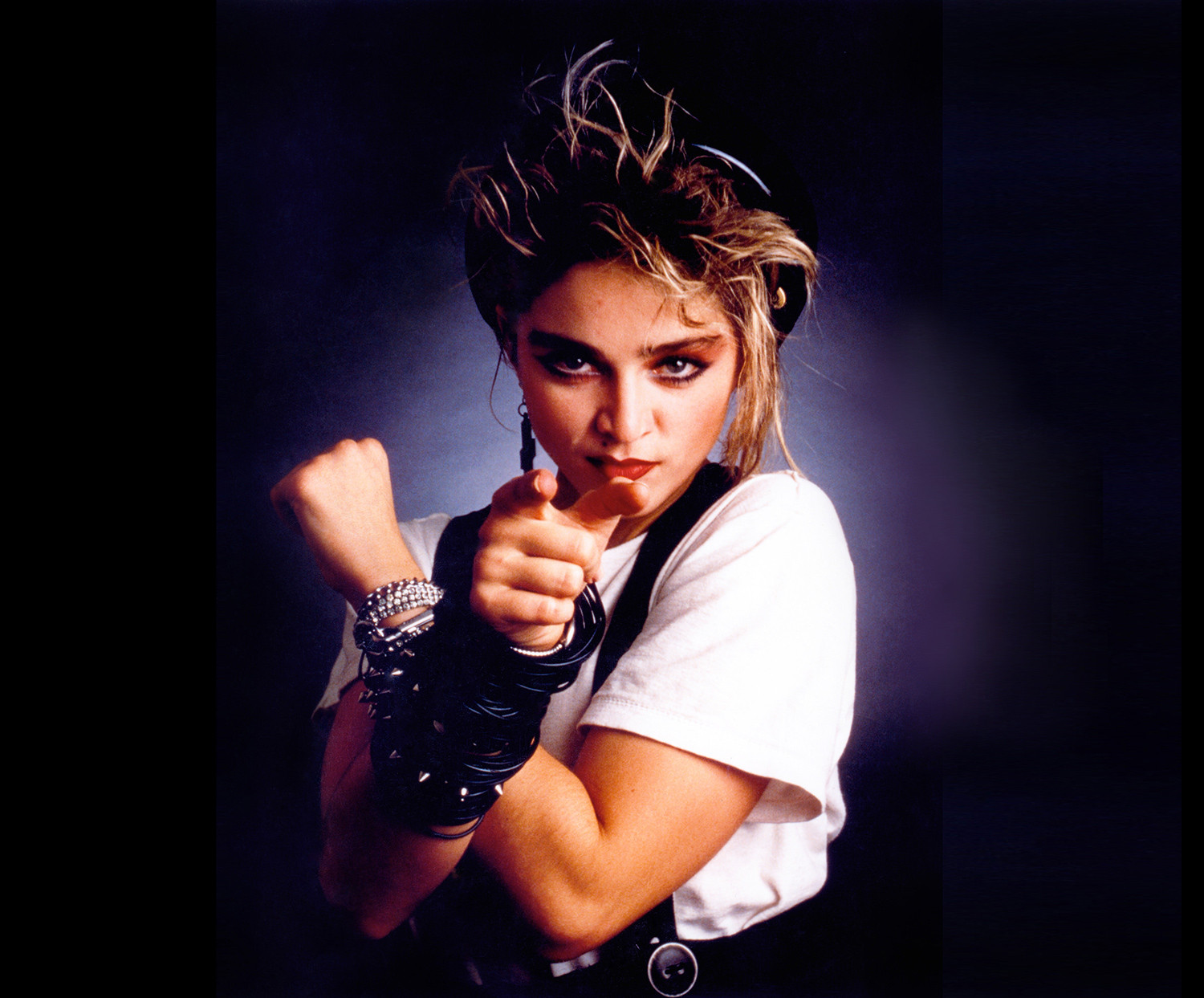 Madonna Erotica album era, sensual and provocative image
Madonna Erotica album era, sensual and provocative image
“Bad Girl,” from the Erotica album, is a melancholic ballad exploring themes of guilt and unsatisfying sexual encounters. Sung from the perspective of a woman engaging in a series of one-night stands, the lyrics express a sense of emptiness and unhappiness: “Drunk by six/ Kissing someone else’s lips. I’m not happy when I act this way.” Producer Shep Pettibone noted Madonna’s rapid songwriting and recording process and her ability to infuse personal depth into her music during this era. “Madonna’s stories were getting a lot more serious and intense, driving the creative direction of the songs into deeply personal territory,” he recalled, highlighting the introspective nature of Madonna’s songwriting during the Erotica period.
“Everybody” (from ‘Madonna,’ 1983)
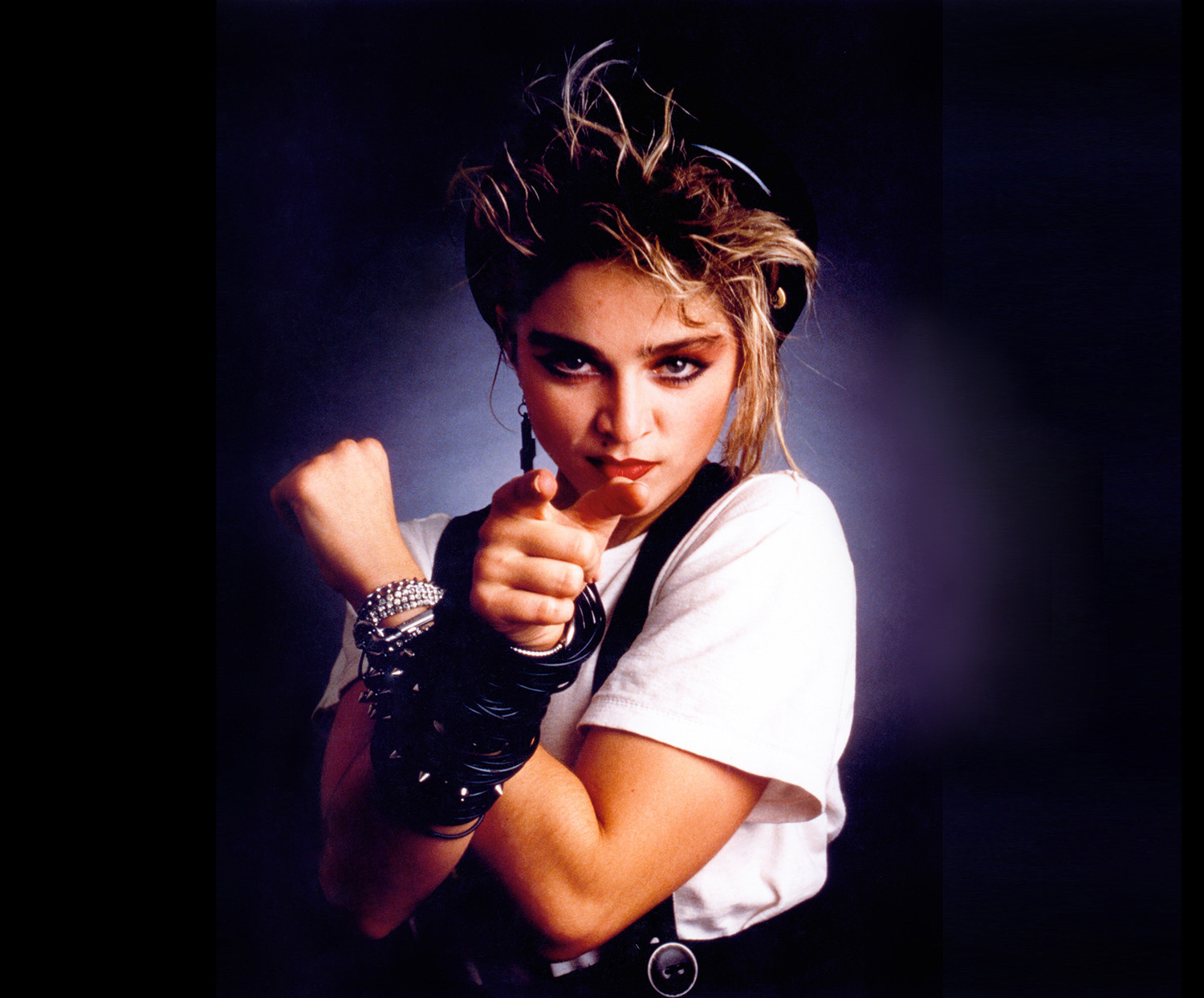 Madonna's first album cover, 1983 debut with simple design
Madonna's first album cover, 1983 debut with simple design
“Everybody” marked Madonna’s debut single and the beginning of her iconic career. Initially a demo, the song caught the attention of DJ Mark Kamins at New York’s Danceteria. Kamins played “Everybody,” generating a strong audience response and ultimately leading to Madonna’s record deal with Sire Records. Sire president Seymour Stein, hearing the track while hospitalized, was immediately impressed. “I listened to ‘Everybody,’ and I loved it,” he recalled. “It was a deal for three singles and an option for albums afterward. I would have gone down to the bank and withdrawn my own money to sign her if I had to.” “Everybody” is a quintessential early 80s dance track, capturing the burgeoning energy of the New York club scene and setting the stage for Madonna’s rise to pop stardom.
“La Isla Bonita” (from ‘True Blue,’ 1986)
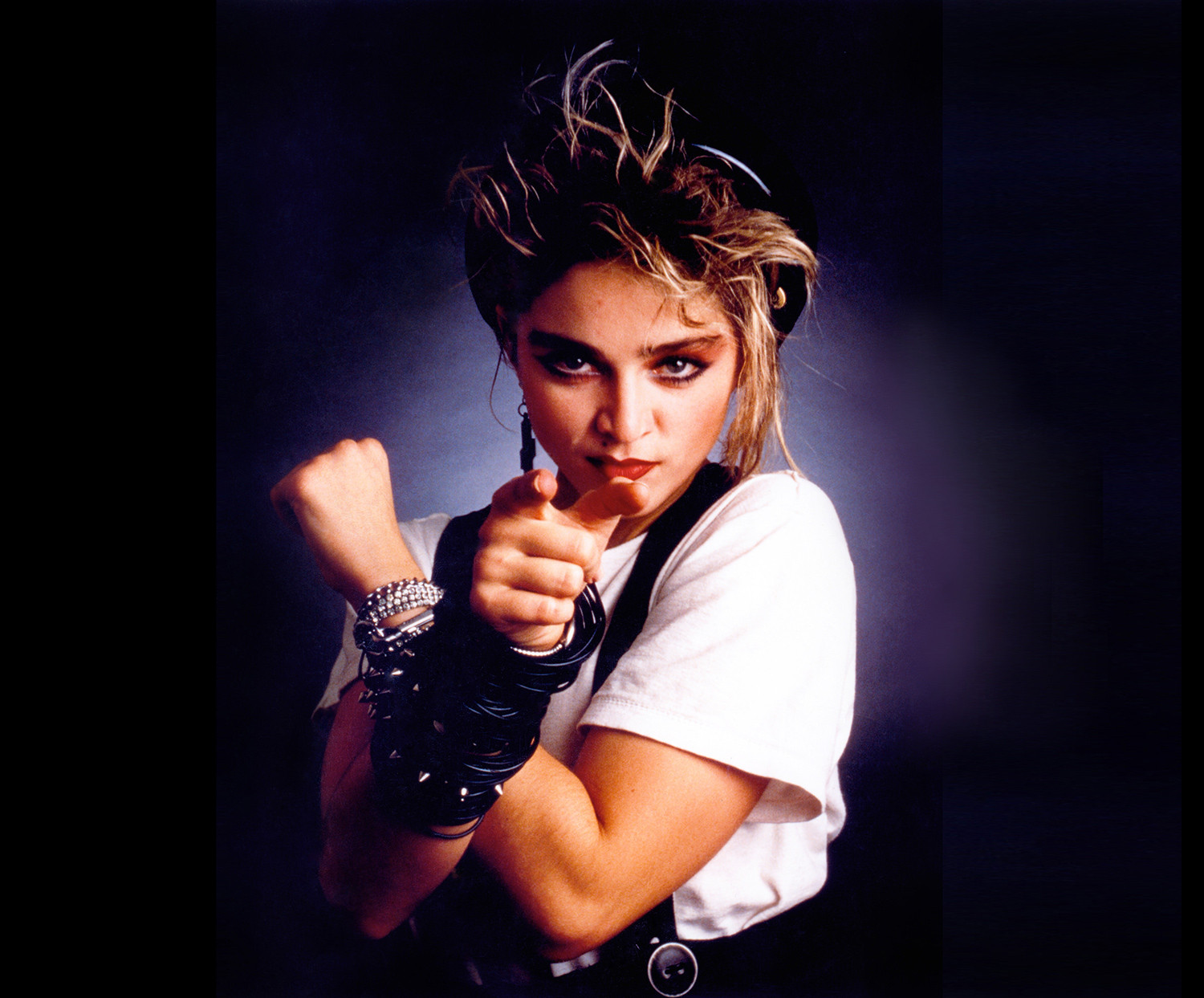 Madonna True Blue era, La Isla Bonita music video flamenco dancer
Madonna True Blue era, La Isla Bonita music video flamenco dancer
“La Isla Bonita” was a stylistic departure for Madonna, incorporating Latin influences into her pop sound. This uptempo ballad features Spanish guitar, Cuban percussion, and lyrics evoking dreams of an exotic San Pedro. Co-written with Patrick Leonard and Bruce Gaitsch, the song’s origins trace back to Michael Jackson, for whom Leonard originally wrote the music. Jackson rejected the title, leading Leonard to offer it to Madonna. She then crafted lyrics inspired by “the beauty and mystery of Latin American people,” despite having no direct connection to San Pedro, as she admitted, “I don’t know where San Pedro is.” The music video, featuring Madonna as a flamenco dancer, became one of her most visually striking and influential clips from the 1980s, inspiring artists like Lady Gaga.
“Bitch I’m Madonna” (from ‘Rebel Heart,’ 2015)
 Madonna Rebel Heart era, Bitch I'm Madonna music video with Nicki Minaj
Madonna Rebel Heart era, Bitch I'm Madonna music video with Nicki Minaj
“Bitch I’m Madonna” is an unapologetic and defiant track from Rebel Heart, asserting Madonna’s continued relevance and rebellious spirit in the face of ageism and sexism in the music industry. Thirteen albums into her career, this frantic and attitude-filled song produced by Diplo and featuring a rap verse from Nicki Minaj is a kiss-off to critics and naysayers. Madonna stated that many songs on Rebel Heart address the challenges women face in the industry as they age, saying, “Women, when they reach a certain age, have accepted that they’re not allowed to behave a certain way. But I never follow the rules. I never did, and I’m not going to start.” The collaboration with Minaj highlights Madonna’s ability to stay current and collaborate with contemporary artists.
“Keep It Together” (from ‘Like a Prayer,’ 1989)
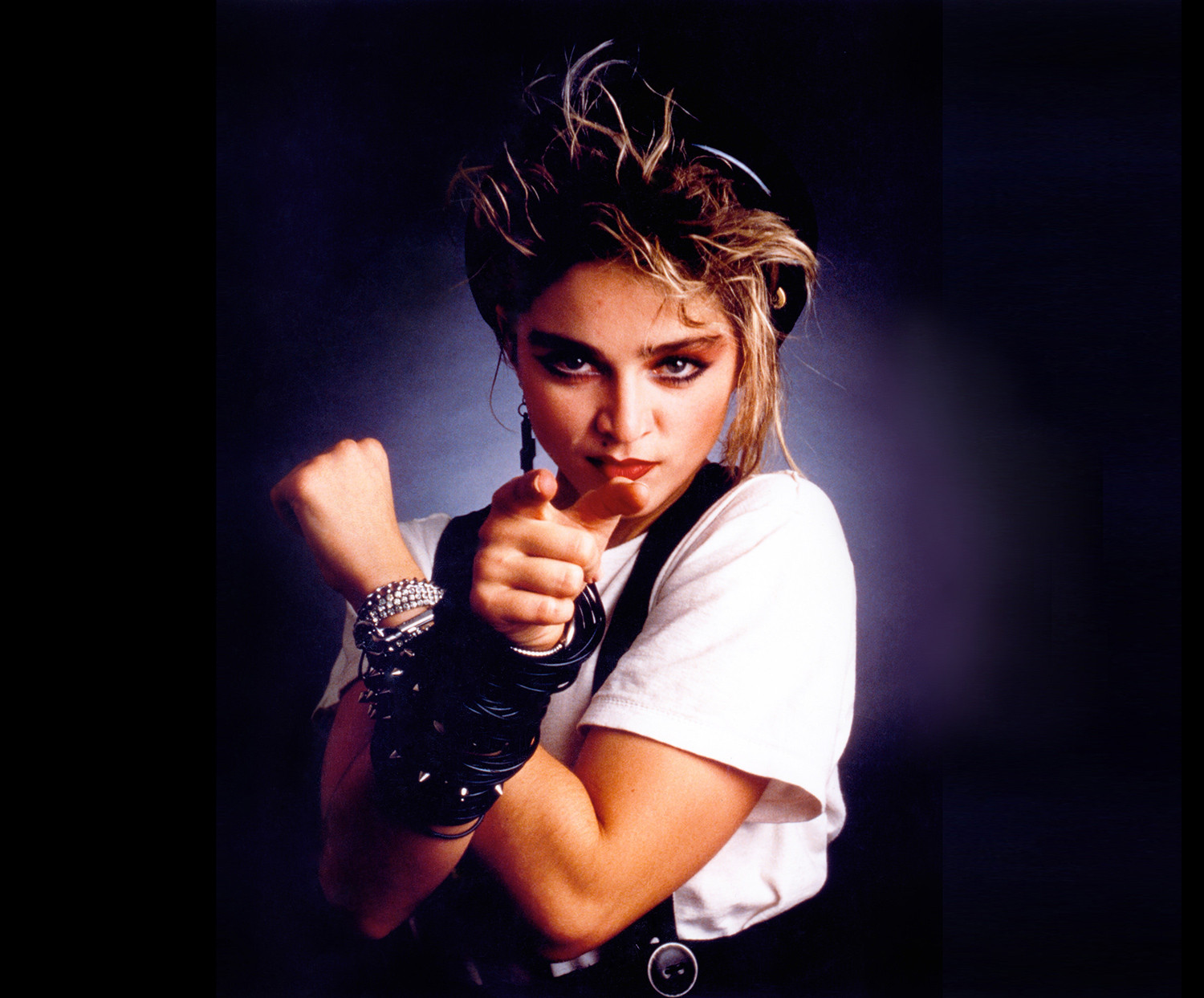 Madonna Like a Prayer era, Keep It Together music video family theme
Madonna Like a Prayer era, Keep It Together music video family theme
“Keep It Together,” from Like a Prayer, is an upbeat tribute to family and familial bonds, contrasting with the album’s more intense and introspective tracks. Inspired by Sly and the Family Stone’s “Family Affair” and Sister Sledge’s “We Are Family,” the song emphasizes the importance of family unity. Madonna sings, “Brothers and sisters hold the key… Don’t forget that your family is gold.” She described “Keep It Together” as a direct homage to Sly Stone, adding that the album’s emotional core was drawn from her own experiences growing up and her ongoing journey of self-discovery. This song showcases a more celebratory and optimistic side of Like a Prayer‘s thematic exploration.
“Deeper and Deeper” (from ‘Erotica,’ 1992)
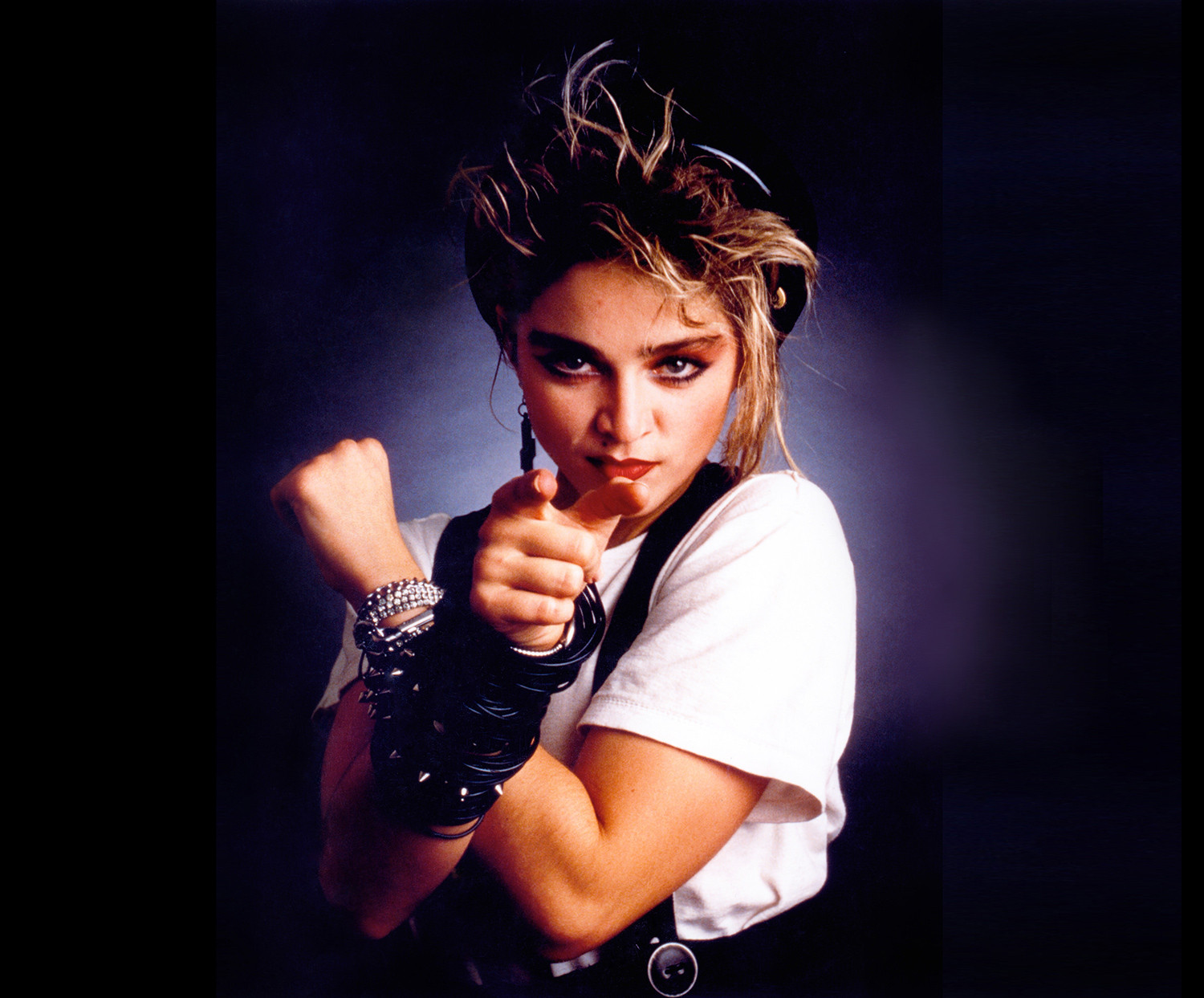 Madonna Erotica era, Deeper and Deeper music video disco and vogueing
Madonna Erotica era, Deeper and Deeper music video disco and vogueing
“Deeper and Deeper,” from Erotica, is a house-infused track with a playful nod to Madonna’s earlier hit “Vogue.” The song’s lyrics, “Let your body move to the music,” directly reference “Vogue,” creating a connection between her past and present musical styles. Producer Shep Pettibone recalled the spontaneous and fun atmosphere in the studio, leading to the inclusion of the “Vogue” reference. Despite Pettibone’s initial reservations about adding a flamenco guitar solo, Madonna insisted, resulting in a unique blend of Philly house and Latin influences. “Deeper and Deeper” exemplifies Madonna’s willingness to experiment and fuse diverse musical elements within a dance-pop framework.
“Hanky Panky” (from ‘I’m Breathless,’ 1990)
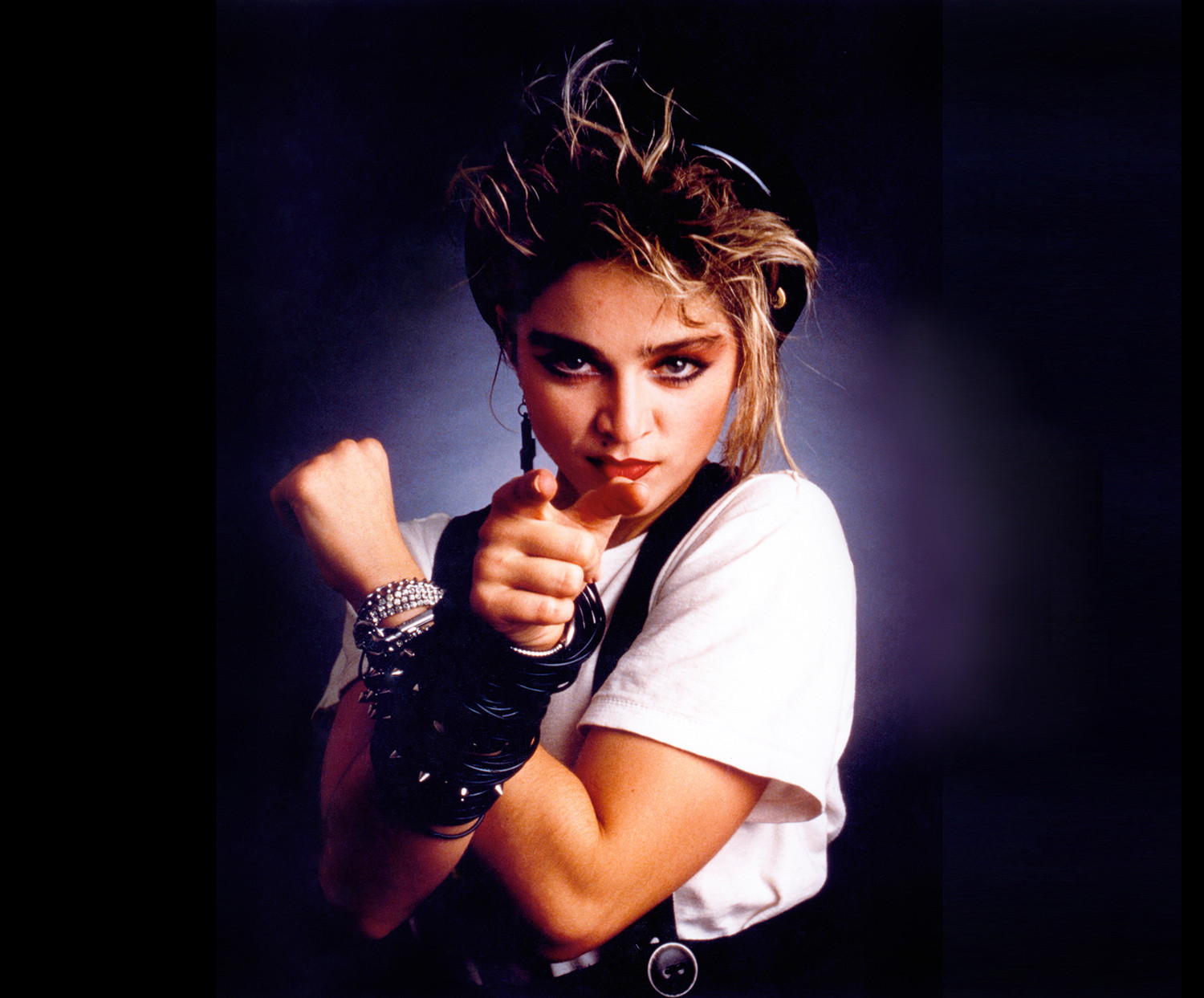 Madonna Blond Ambition Tour, Hanky Panky performance with jazz and spanking theme
Madonna Blond Ambition Tour, Hanky Panky performance with jazz and spanking theme
“Hanky Panky,” from the I’m Breathless album, is a jazzy and tongue-in-cheek ode to spanking. Inspired by a line from her Dick Tracy character, Breathless Mahoney, (“You don’t know if you want to hit me or kiss me”), Madonna created this playful song exploring the theme of playful dominance and submission. During her Blond Ambition Tour, Madonna famously introduced the song by saying, “You may not know this song, but you know the pleasures of a good spanking.” While intended humorously, some misinterpreted the song, leading Madonna to assertively clarify her stance, stating, “Try it and I’ll knock your fucking head off,” emphasizing the song’s lighthearted and provocative nature.
“Lucky Star” (from ‘Madonna,’ 1983)
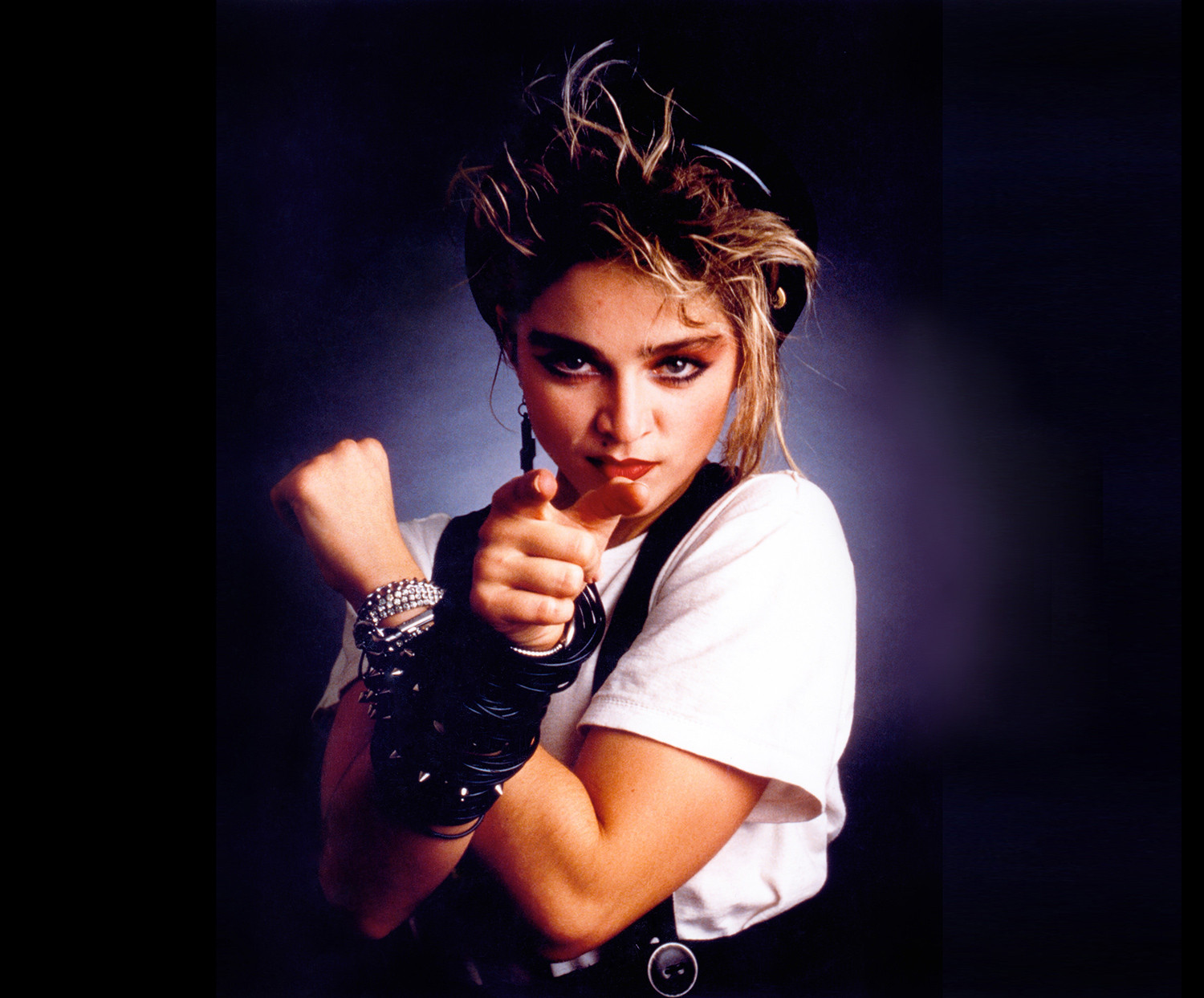 Madonna's first album era, Lucky Star music video with iconic 80s style
Madonna's first album era, Lucky Star music video with iconic 80s style
“Lucky Star,” from Madonna’s debut album, is a shimmering and upbeat track that became an early signature song for the artist. Originally written for DJ Mark Kamins, Madonna hoped he would play it at Danceteria. After recording an R&B-infused demo with Reggie Lucas, she enlisted Jellybean Benitez to refine the track. Benitez added a funky guitar line, enhancing its dance-pop appeal. The music video for “Lucky Star” gained heavy rotation on MTV, contributing to Madonna’s burgeoning fashion influence and popularizing trends like hair ribbons and cut-off gloves among teenagers, solidifying her status as a style icon.
“4 Minutes” (from ‘Hard Candy,’ 2008)
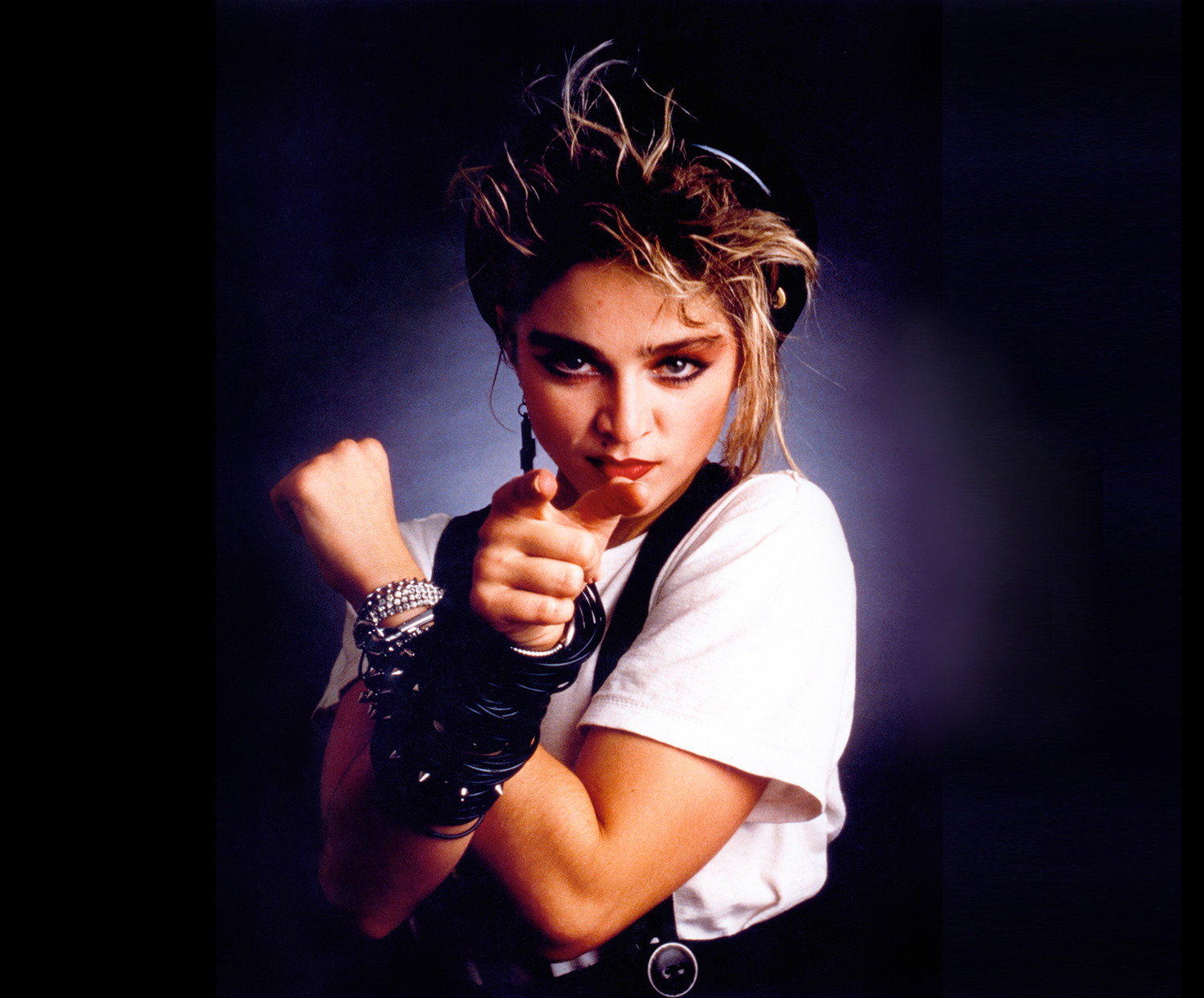 Madonna Hard Candy era, 4 Minutes music video with Justin Timberlake and Timbaland production
Madonna Hard Candy era, 4 Minutes music video with Justin Timberlake and Timbaland production
“4 Minutes,” from Hard Candy, marked Madonna’s return to sexually charged pop with a collaboration with R&B and hip-hop producers like Timbaland and Justin Timberlake. This marching-band-inspired track features an insistent “tick-tock” refrain and a sense of urgency. Madonna explained the song’s paradoxical message: “‘We’re running out of time – people, wake up. But if we are going to save the world, can we please have a good time while we’re doing it?'” The collaboration with Timberlake arose from a shared concern for children in Malawi, blending social awareness with danceable pop. Timberlake praised their collaborative process, saying, “We went down into the valleys together and we came out on top of mountains,” highlighting the creative synergy between the artists.
“True Blue” (from ‘True Blue,’ 1986)
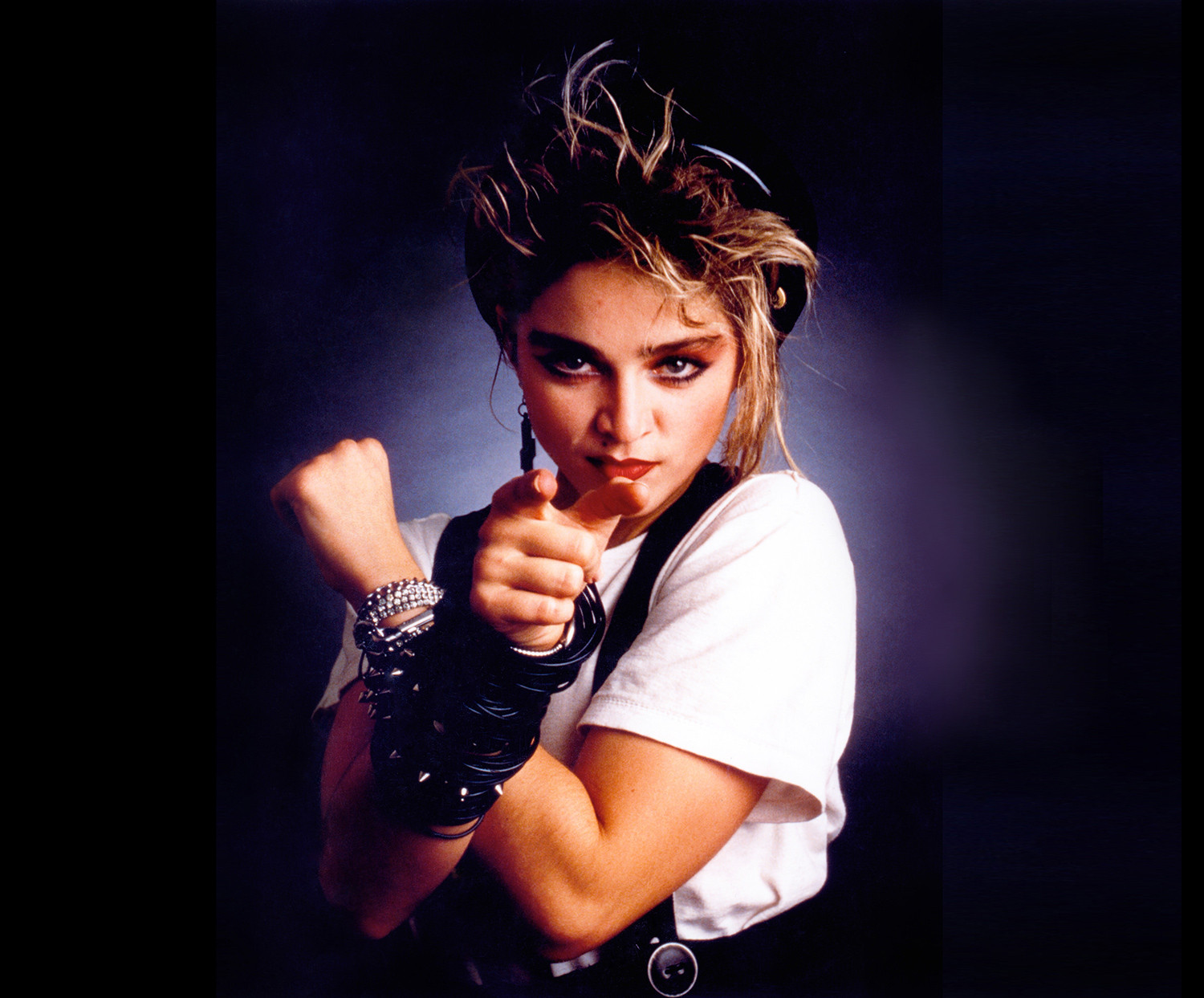 Madonna True Blue album cover, classic blue denim and romantic style
Madonna True Blue album cover, classic blue denim and romantic style
“True Blue,” the title track from the True Blue album, is a sweetly romantic and nostalgic song reflecting Madonna’s blissful state at the time of her marriage to Sean Penn. The song, with its girl-group influences and charming video, was named after a favorite expression of Penn’s. While Madonna later divorced Penn and ceased performing the song live, she retained fond memories of it. In 1998, she associated “true blue” with “romance,” encapsulating the song’s themes of love and sentimentalism. “True Blue” remains a classic example of Madonna’s ability to capture personal emotions within catchy pop melodies.
“I Deserve It” (from ‘Music,’ 2000)
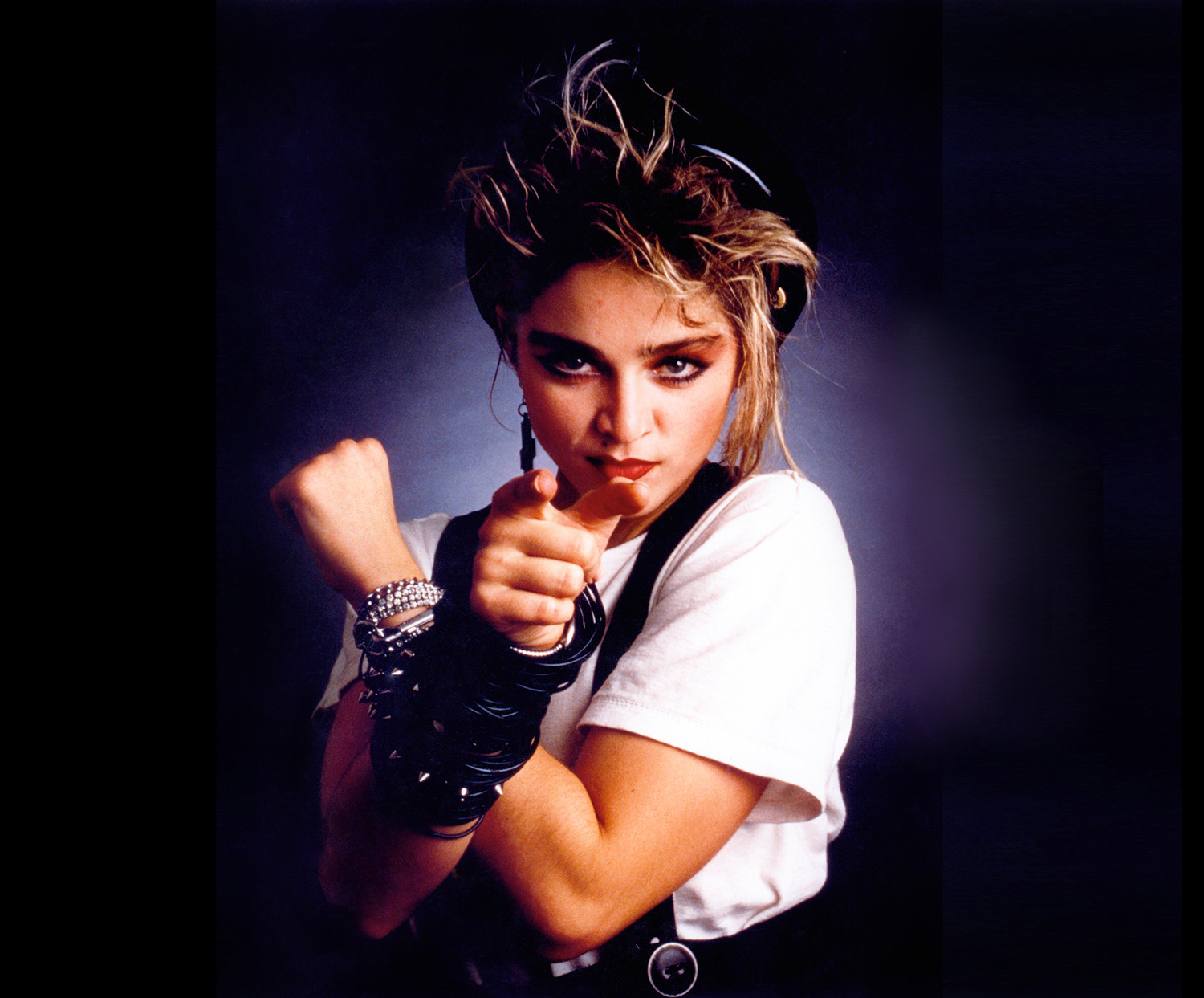 Madonna Music album era, I Deserve It performance with acoustic guitar
Madonna Music album era, I Deserve It performance with acoustic guitar
“I Deserve It,” from the Music album, is described by Madonna as a love song, but with a sense of loneliness. This earnest track combines acoustic guitar strumming with increasingly dissonant keyboards, creating a unique sonic tension. Madonna noted the “juxtaposition of the acoustic guitar and then that synth siren sound… that strange combination makes it a little bit uncomfortable.” Producer Mirwais intentionally left Madonna’s vocals unprocessed, emphasizing their raw purity. Madonna initially felt uneasy with this unfiltered approach, but came to appreciate its honesty and emotional depth. “I Deserve It” stands out for its vulnerability and unconventional sonic landscape within Madonna’s discography.
“Gambler” (from ‘Vision Quest,’ 1985)
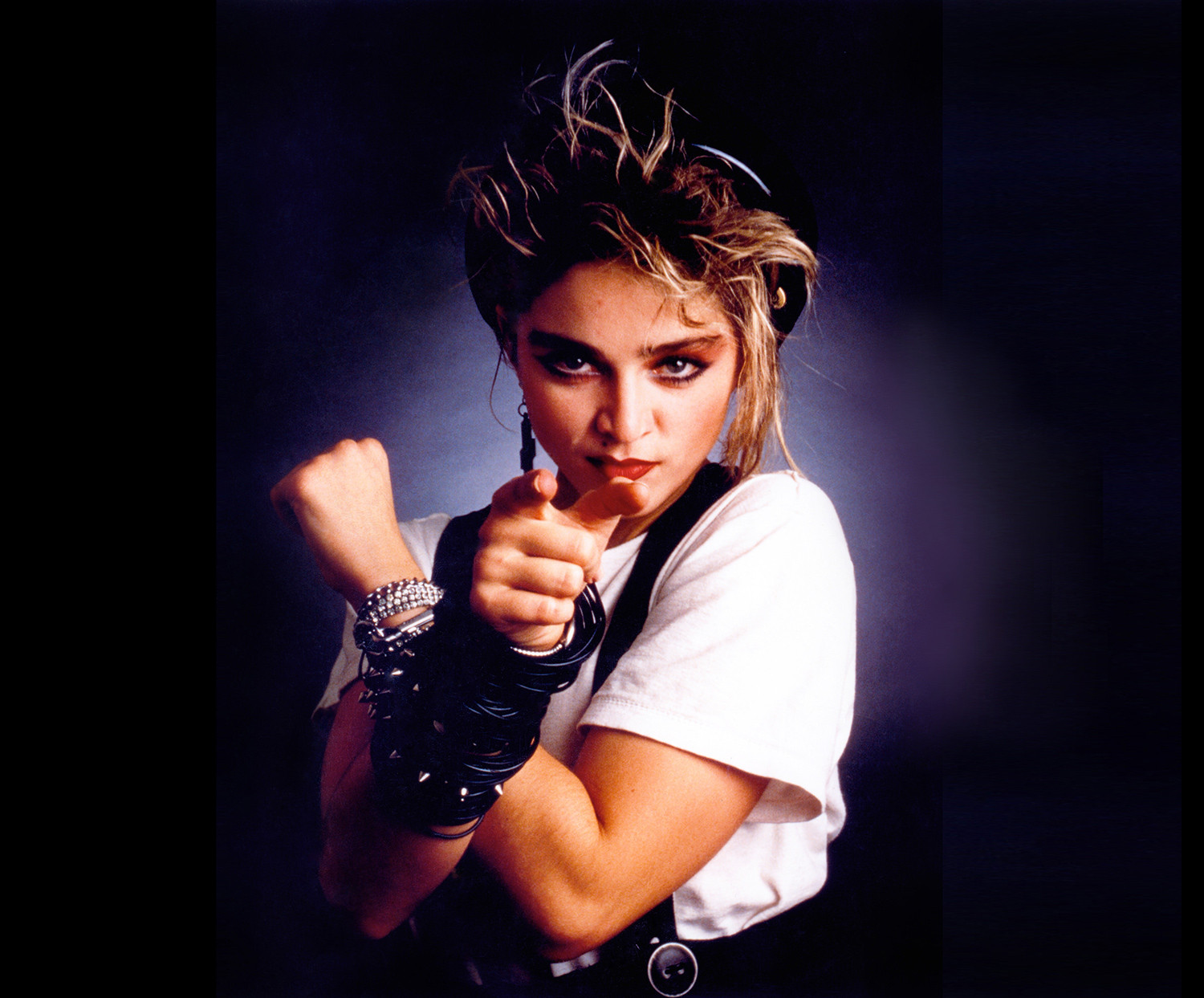 Madonna in Vision Quest movie, performing Gambler in a club scene
Madonna in Vision Quest movie, performing Gambler in a club scene
“Gambler” was one of two songs Madonna recorded for the 1985 film Vision Quest, alongside “Crazy for You.” This energetic dance track, written by Madonna and produced by Jellybean Benitez, captures a sense of urgency and assertiveness. Madonna explained that “‘The Gambler’ is really the girl’s point of view, because she’s, like, an unstoppable person. She doesn’t really need this guy,” aligning with the film’s narrative of a strong, independent female character. Despite not being released as a single, “Gambler” became a popular staple of Madonna’s Virgin Tour, highlighting its appeal as a dynamic and empowering dance anthem.
“Take a Bow” (from ‘Bedtime Stories,’ 1994)
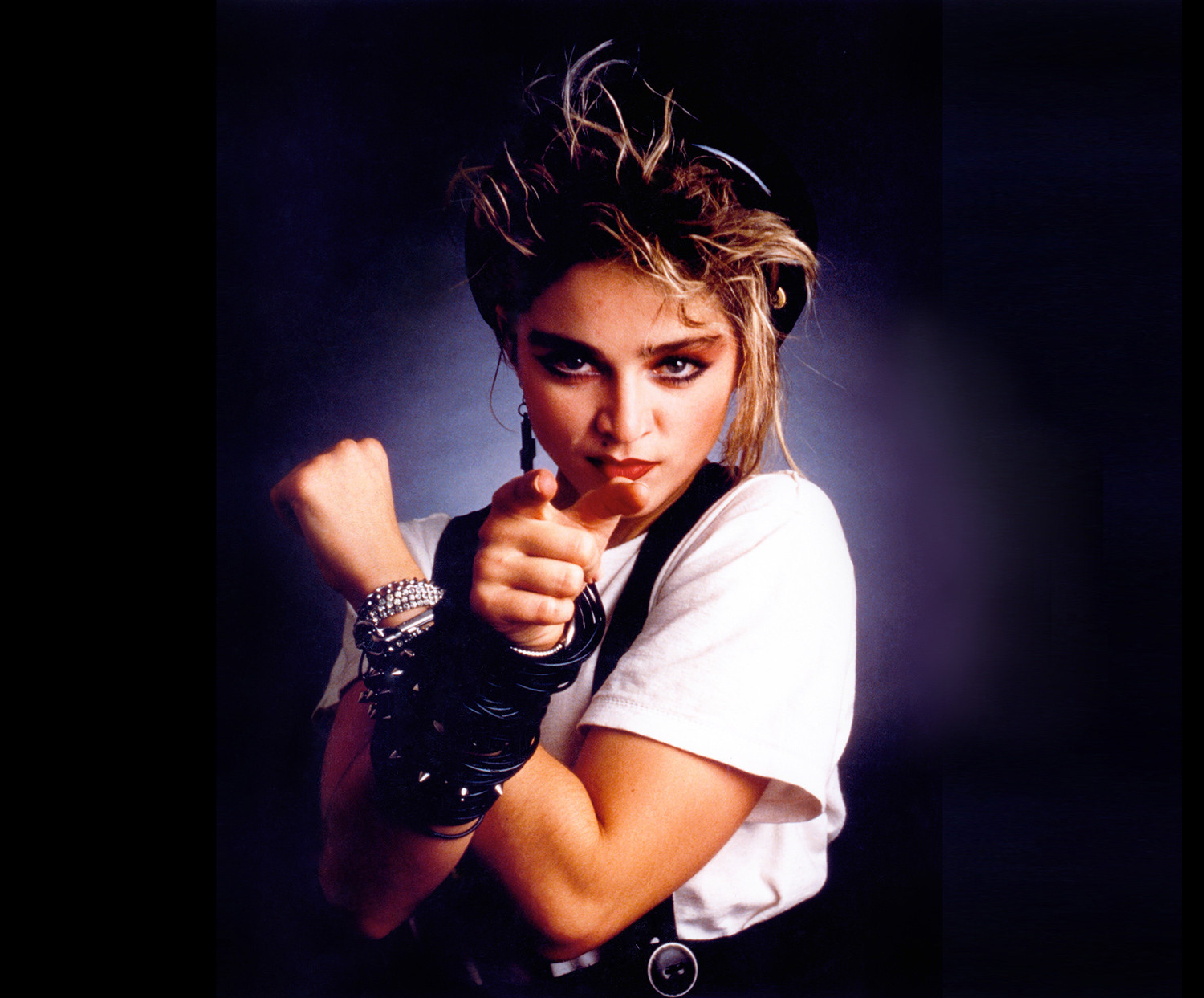 Madonna Bedtime Stories era, Take a Bow music video Spanish bullfighting theme
Madonna Bedtime Stories era, Take a Bow music video Spanish bullfighting theme
“Take a Bow,” closing the Bedtime Stories album, is a grand and theatrical ballad, rich with Shakespearean undertones. In it, Madonna bids farewell to a flawed lover with the lines, “Take a bow, the night is over/The masquerade is getting older.” Co-written with Kenneth “Babyface” Edmonds, known for his R&B hits, “Take a Bow” was envisioned as a lush ballad. Edmonds recalled, “She came to me for lush ballads, so that’s where we went. I wasn’t so much thinking about the charts. I think I was more in awe of the fact that I was working with Madonna. It was initially surreal. Then you get to know the person a little bit and you can calm down.” The song’s dramatic flair and emotional depth made it a standout ballad in Madonna’s repertoire.
“Frozen” (from ‘Ray of Light,’ 1998)
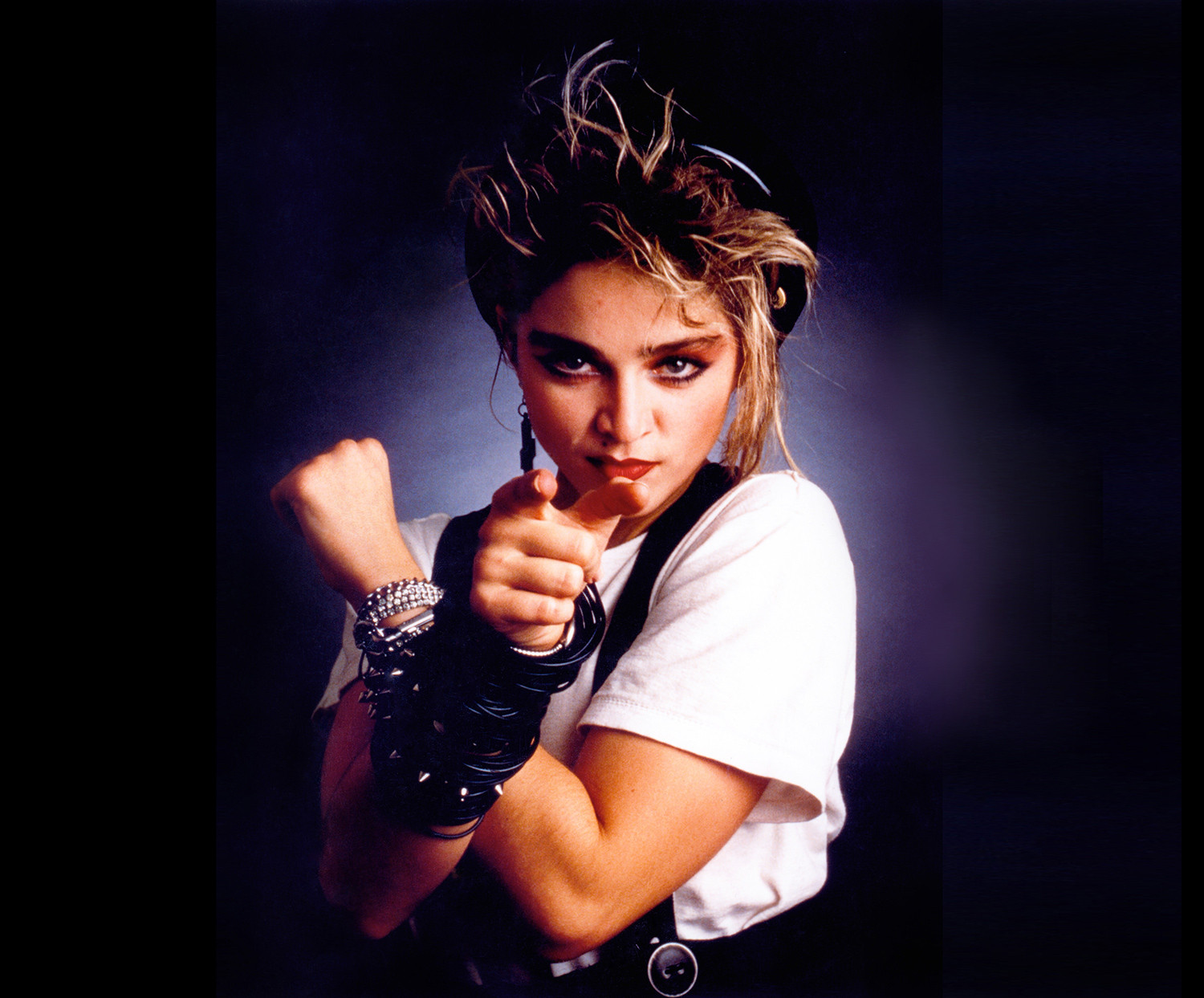 Madonna Ray of Light era, Frozen music video desert setting and dark imagery
Madonna Ray of Light era, Frozen music video desert setting and dark imagery
“Frozen,” from Ray of Light, is a cold and cinematic electro-ballad expressing intense emotions of “retaliation, revenge, hate [and] regret.” Inspired by the film The Sheltering Sky, Madonna drew from its themes of strained relationships and North African setting, influencing both the song’s lyrical content and Moroccan-influenced beats. As she wrote “Frozen,” Madonna’s creative process led to an extended 10-minute demo version, showcasing her deep immersion in the song’s emotional landscape. The music video, filmed in the Mojave Desert, aimed to visually represent “the embodiment of female angst,” enhancing the song’s dramatic and introspective qualities.
“Cherish” (from ‘Like a Prayer,’ 1989)
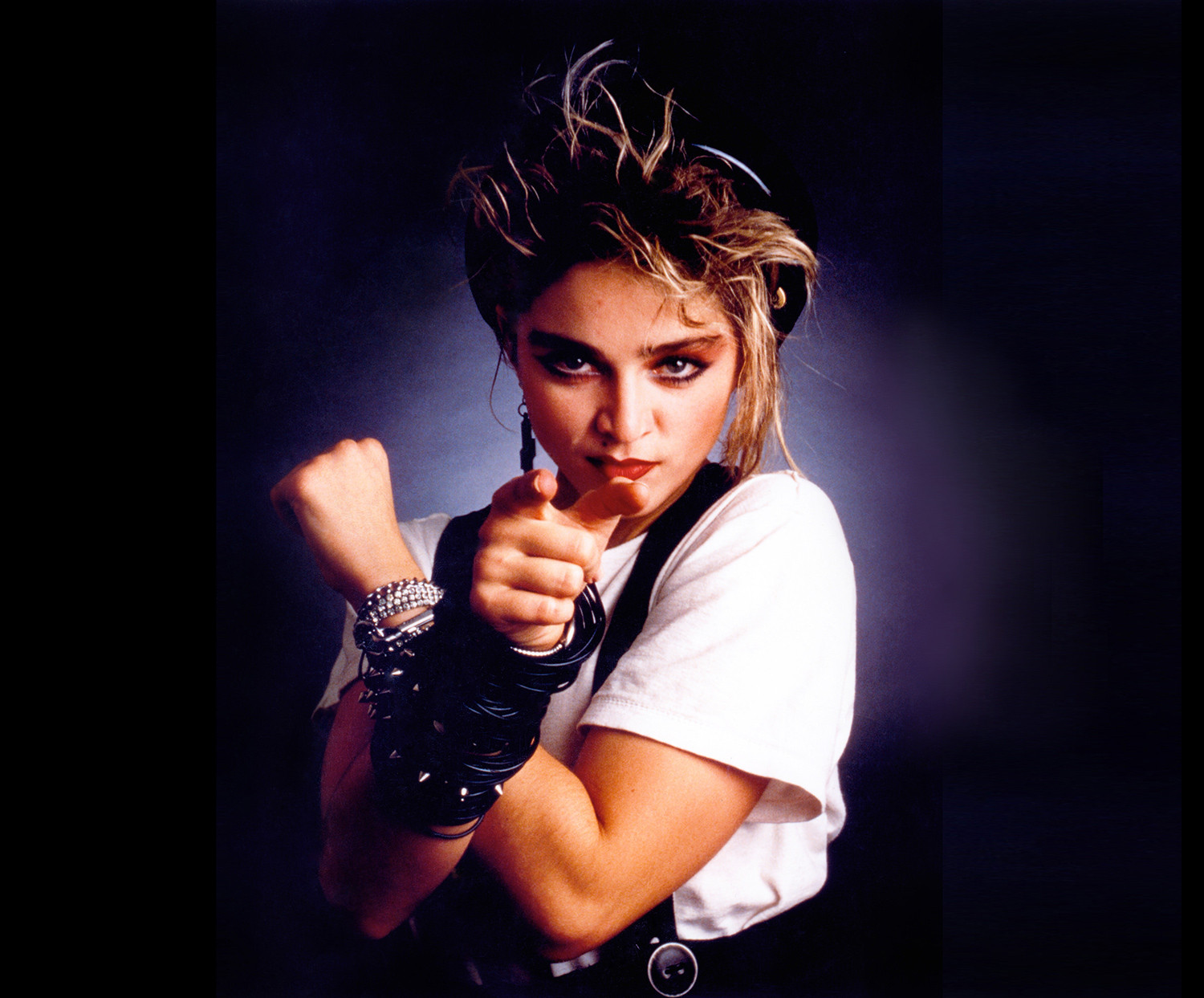 Madonna Like a Prayer era, Cherish music video playful and optimistic
Madonna Like a Prayer era, Cherish music video playful and optimistic
“Cherish,” from Like a Prayer, is one of Madonna’s most purely optimistic love songs, inspired by the romance of Romeo and Juliet. Madonna described writing it in a “superhyper-positive state of mind that I knew was not going to last.” The song’s upbeat tempo and cheerful lyrics, combined with a playful music video directed by fashion photographer Herb Ritts, contributed to its commercial success. Madonna expressed surprise at its popularity, noting, “The songs that I think are the most retarded songs I’ve written, like ‘Cherish’… end up being the biggest hits,” highlighting the often unpredictable nature of pop success.
“Don’t Tell Me” (from ‘Music,’ 2000)
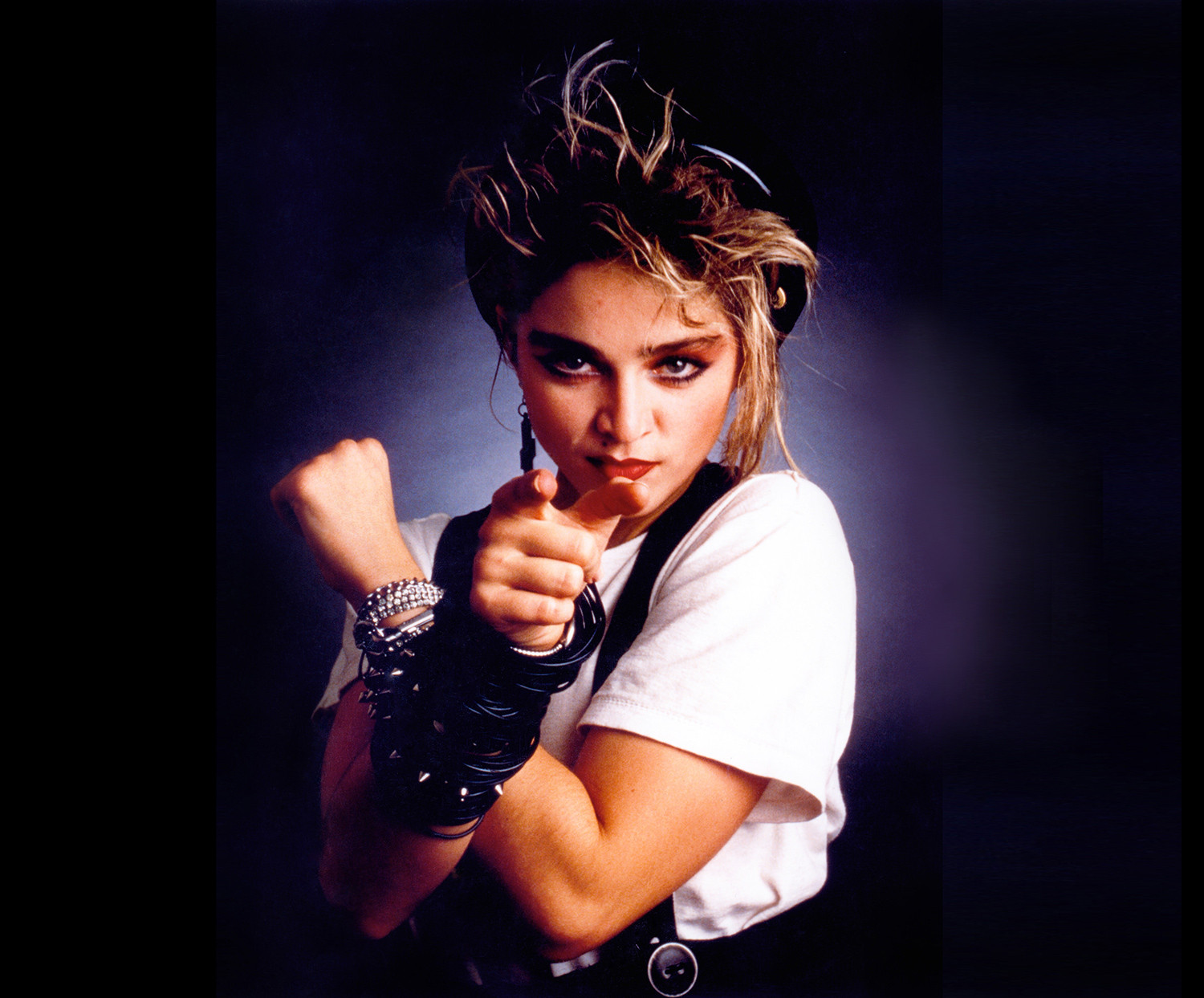 Madonna Music album era, Don't Tell Me music video country and electronic fusion
Madonna Music album era, Don't Tell Me music video country and electronic fusion
“Don’t Tell Me,” from Music, surprised listeners with its unexpected blend of twangy country elements and electronic pop. The song originated as a tango written by Madonna’s brother-in-law, singer-songwriter Joe Henry, which Madonna and French producer Mirwais then reworked in London. Madonna was drawn to “the sentiment of it, the defiance, the attitude of it – ‘Don’t tell me to stop.'” Joe Henry noted the transformative effect of Madonna and Mirwais’s reworking, stating, “I realized that, you know, groove is everything,” emphasizing how they reshaped his tango into a distinctive pop hybrid.
“Beautiful Stranger” (from ‘The Spy Who Shagged Me,’ 1999)
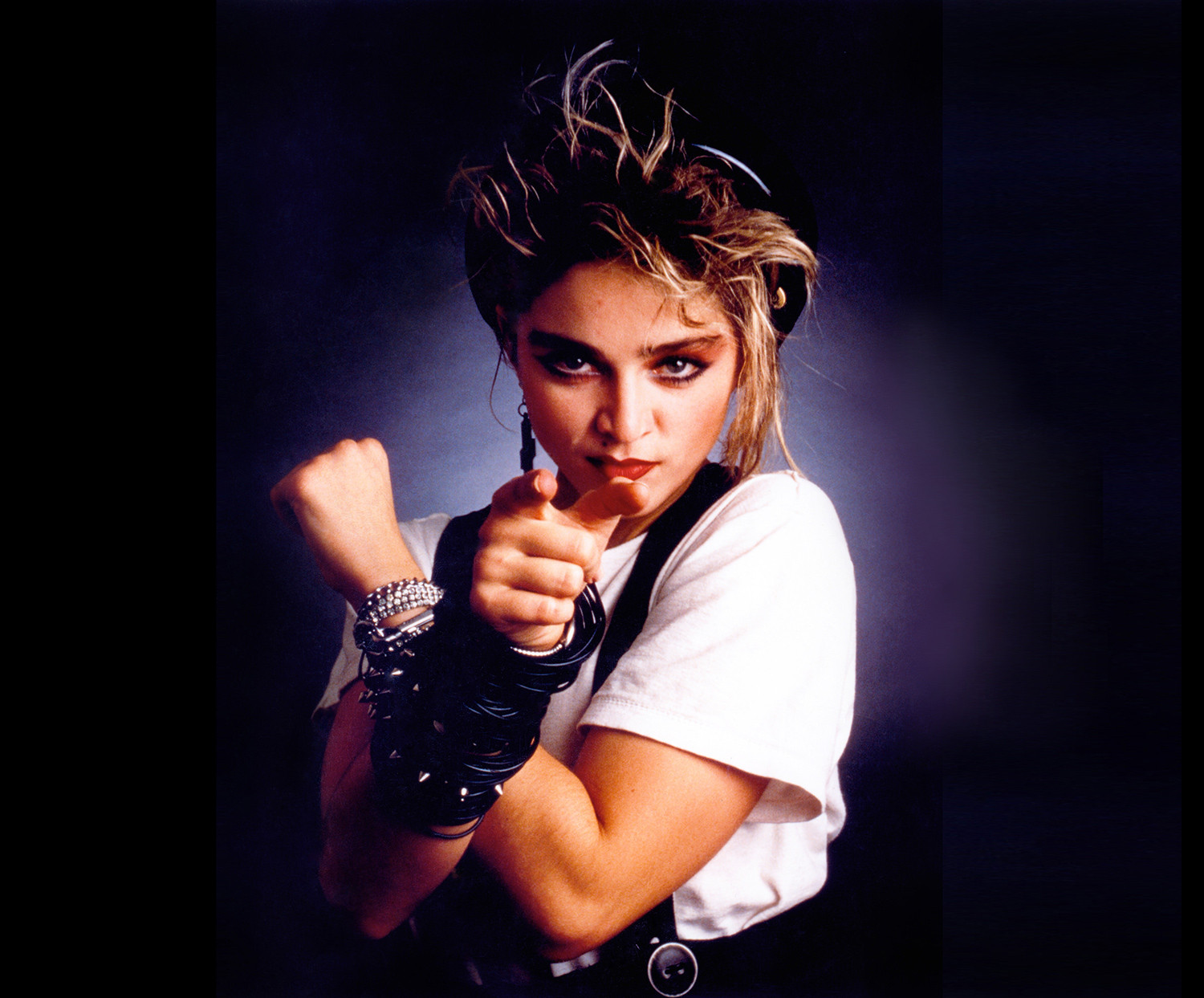 Madonna Beautiful Stranger music video, Austin Powers movie soundtrack
Madonna Beautiful Stranger music video, Austin Powers movie soundtrack
“Beautiful Stranger” was created for the soundtrack of The Spy Who Shagged Me, the Austin Powers sequel. This song blends the electronica sound of Ray of Light with Sixties psych-pop influences, a collaboration between Madonna and producer William Orbit. The song’s origins date back to a 1993 conversation where Madonna suggested a remake of Some Like It Hot to Mike Myers. While that film didn’t materialize, their collaboration on the Austin Powers soundtrack did. Introducing the video on Top of the Pops, Madonna succinctly described the song as “groovy, baby,” capturing its fun and retro-modern vibe.
“Where’s the Party” (from ‘True Blue,’ 1986)
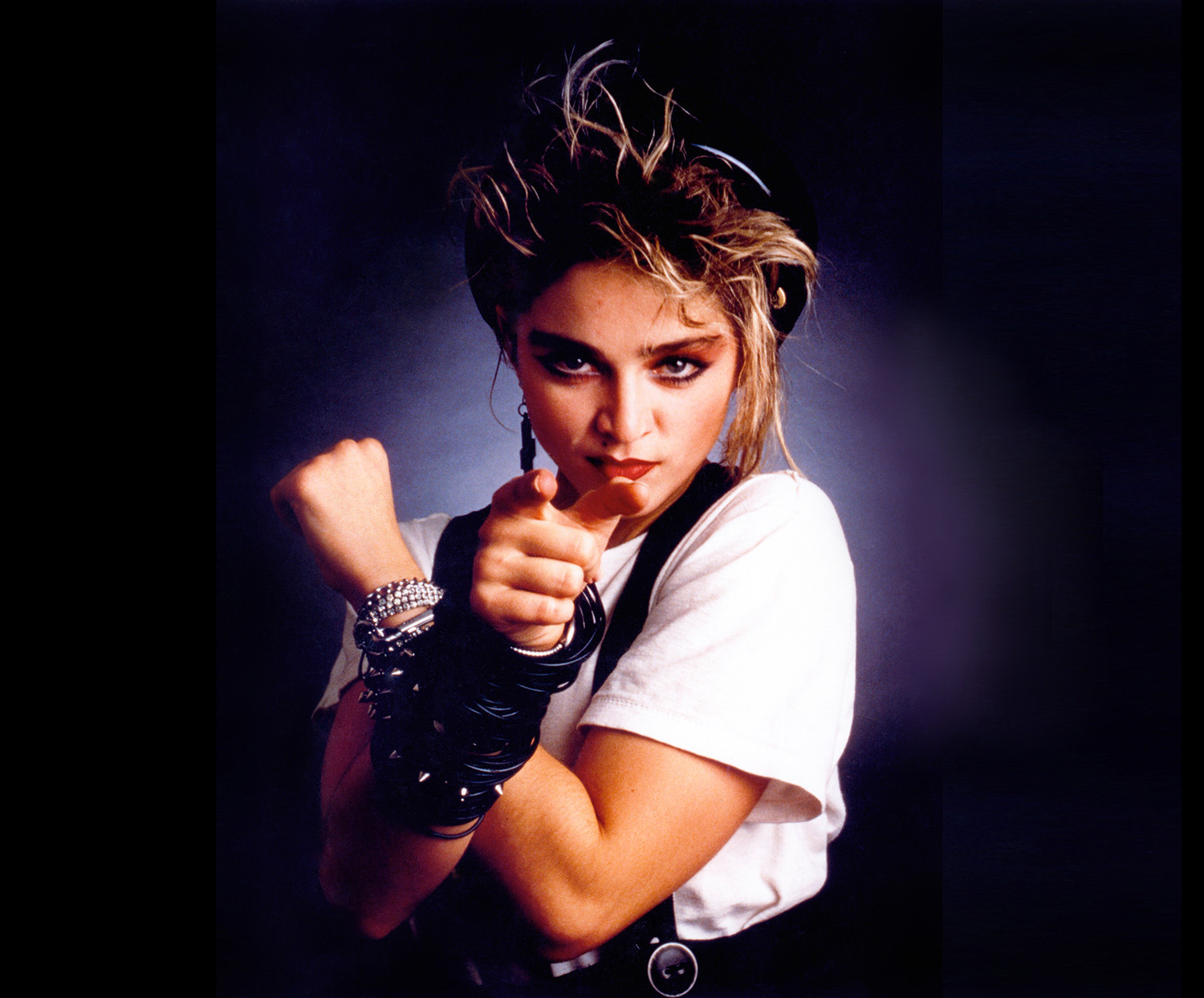 Madonna True Blue era, Where's the Party music video energetic dance scenes
Madonna True Blue era, Where's the Party music video energetic dance scenes
“Where’s the Party,” from True Blue, is an upbeat and escapist track reminiscent of Madonna’s early songs like “Everybody” and “Holiday,” celebrating weekend revelry and freedom. While seemingly lighter in tone compared to other tracks on True Blue like “Papa Don’t Preach” and “La Isla Bonita,” it held a deeper personal meaning for Madonna. It served as a response to negative press coverage. Speaking to The New York Times, she described it as “my ultimate reminder to myself that I want to enjoy life and not let the press get to me, because every once in a while it does,” revealing its role as a personal anthem of resilience against media scrutiny.
“Physical Attraction” (from ‘Madonna,’ 1983)
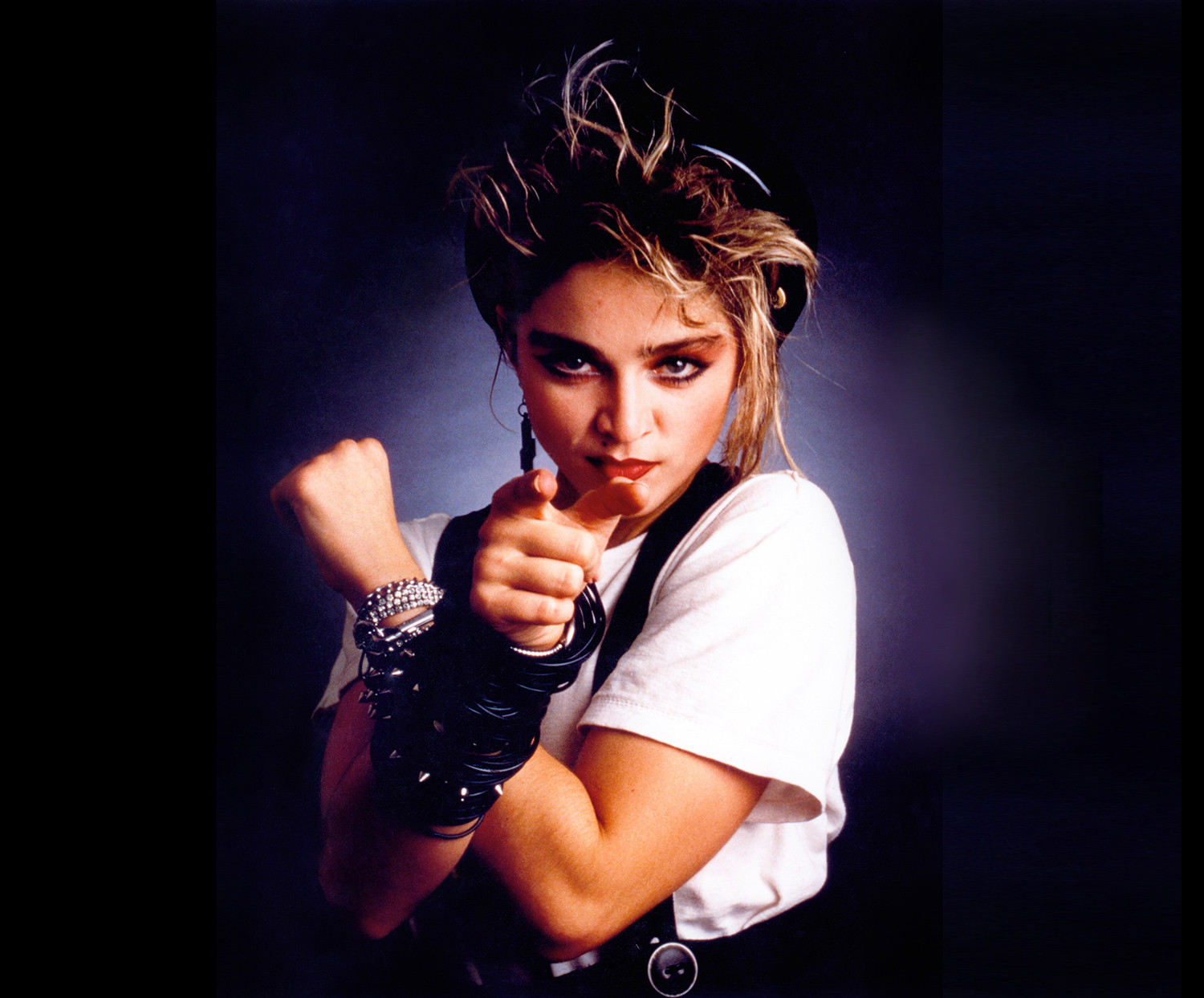 Madonna's first album era, Physical Attraction single cover
Madonna's first album era, Physical Attraction single cover
“Physical Attraction,” from Madonna’s debut album, is a flirtatious early track hinting at her future provocative themes. It served as the B-side to “Burning Up,” showcasing Madonna’s potential to Sire Records. Sire’s Michael Rosenblatt recalled, “Reggie [Lucas] wrote two of the songs: ‘Borderline’ and ‘Physical Attraction.’ The rest were Madonna Songs,” highlighting the collaborative nature of her early work. Producer Reggie Lucas described the creative freedom of those early sessions, noting, “There was no committee rendering judgment from on high, because she was brand new and frankly nobody cared about her that much,” allowing for uninhibited artistic exploration.
“Who’s That Girl” (from ‘Who’s That Girl,’ 1987)
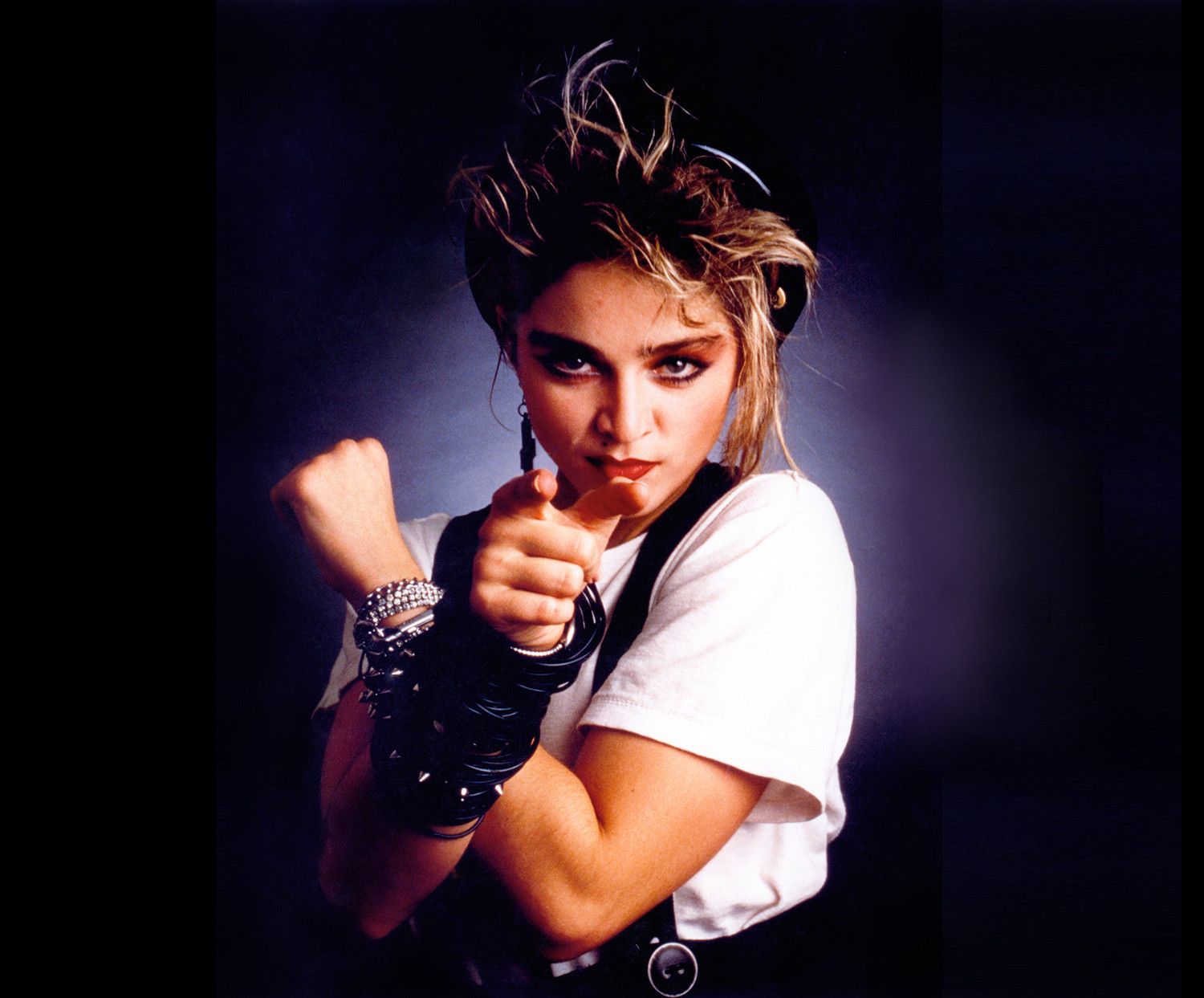 Madonna Who's That Girl movie poster, bright and comedic image
Madonna Who's That Girl movie poster, bright and comedic image
“Who’s That Girl,” the title track from the film of the same name starring Madonna, was a quickly conceived hit. Co-writer Patrick Leonard recounted the song’s rapid creation: “I had this chorus. She went in the back room with a cassette of that. I worked out the rest of the parts and she finished the melody and the lyrics. She said, ‘We’ll call it “Who’s That Girl,” and I think that’s a better title than Slammer, so we’ll change the title of the movie, too.’” Loosely based on her “feisty femme” character Nikki Finn, “Who’s That Girl” is a bright dance-pop song that achieved greater success than the film it accompanied, demonstrating Madonna’s knack for creating memorable movie theme songs.
“Holiday” (from ‘Madonna,’ 1983)
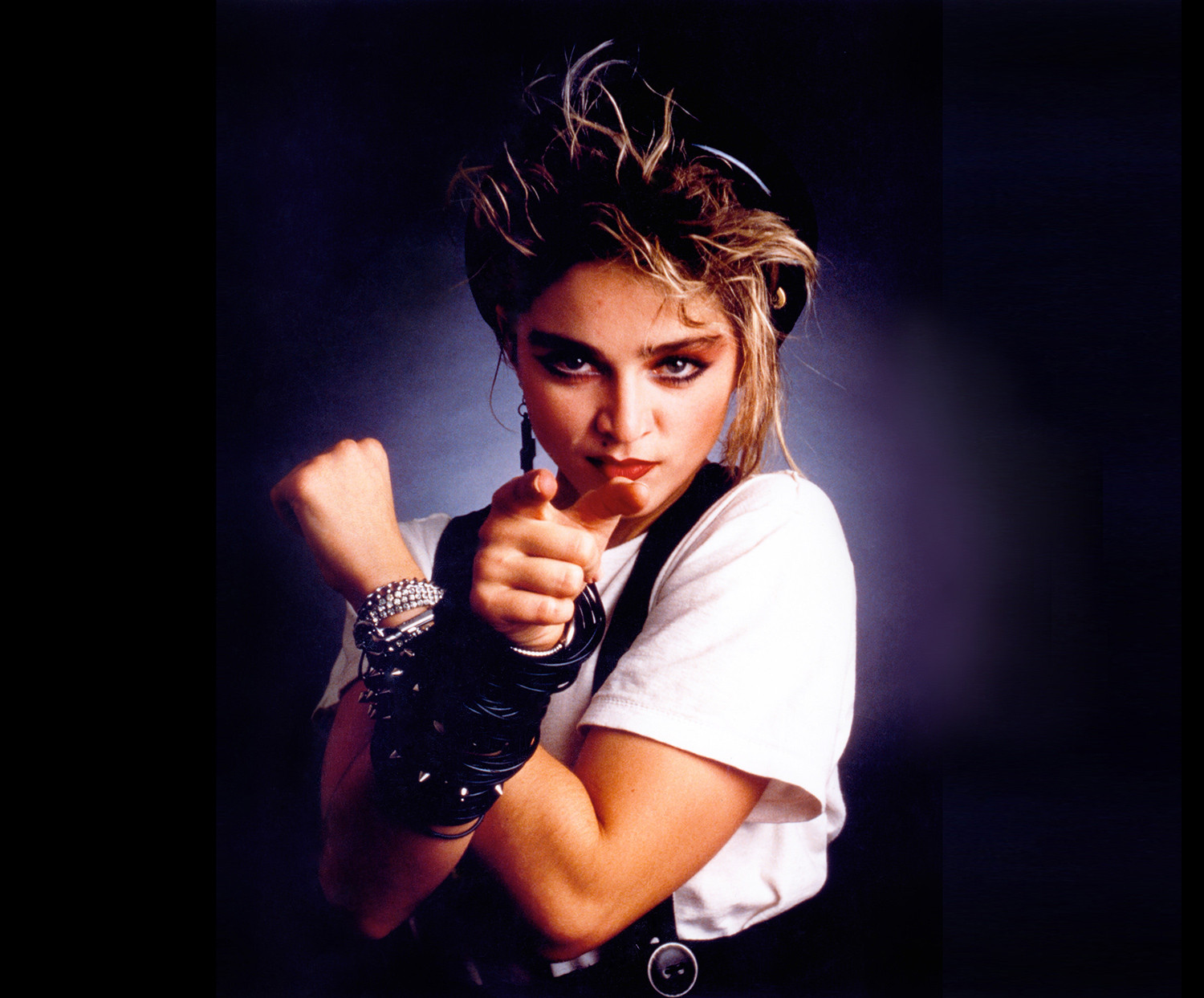 Madonna's first album era, Holiday single cover with festive design
Madonna's first album era, Holiday single cover with festive design
“Holiday,” from Madonna’s debut album, was a crucial addition that solidified her early pop success. Sire Records A&R rep Michael Rosenblatt felt the album needed “something much more uptempo” and secured additional funding to create a new track. Jellybean Benitez brought in “Holiday,” written by Curtis Hudson and Lisa Stevens of Pure Energy, which he and Madonna revamped. Initially released as a B-side, “Holiday” quickly gained traction in clubs, becoming Madonna’s first Top 20 single. Benitez recalled, “I knew that as soon as DJs saw John ‘Jellybean’ Benitez on the ‘Holiday’ side, that was it, because DJs stick together,” highlighting the importance of club DJ support in launching Madonna’s early hits.
“Human Nature” (from ‘Bedtime Stories,’ 1994)
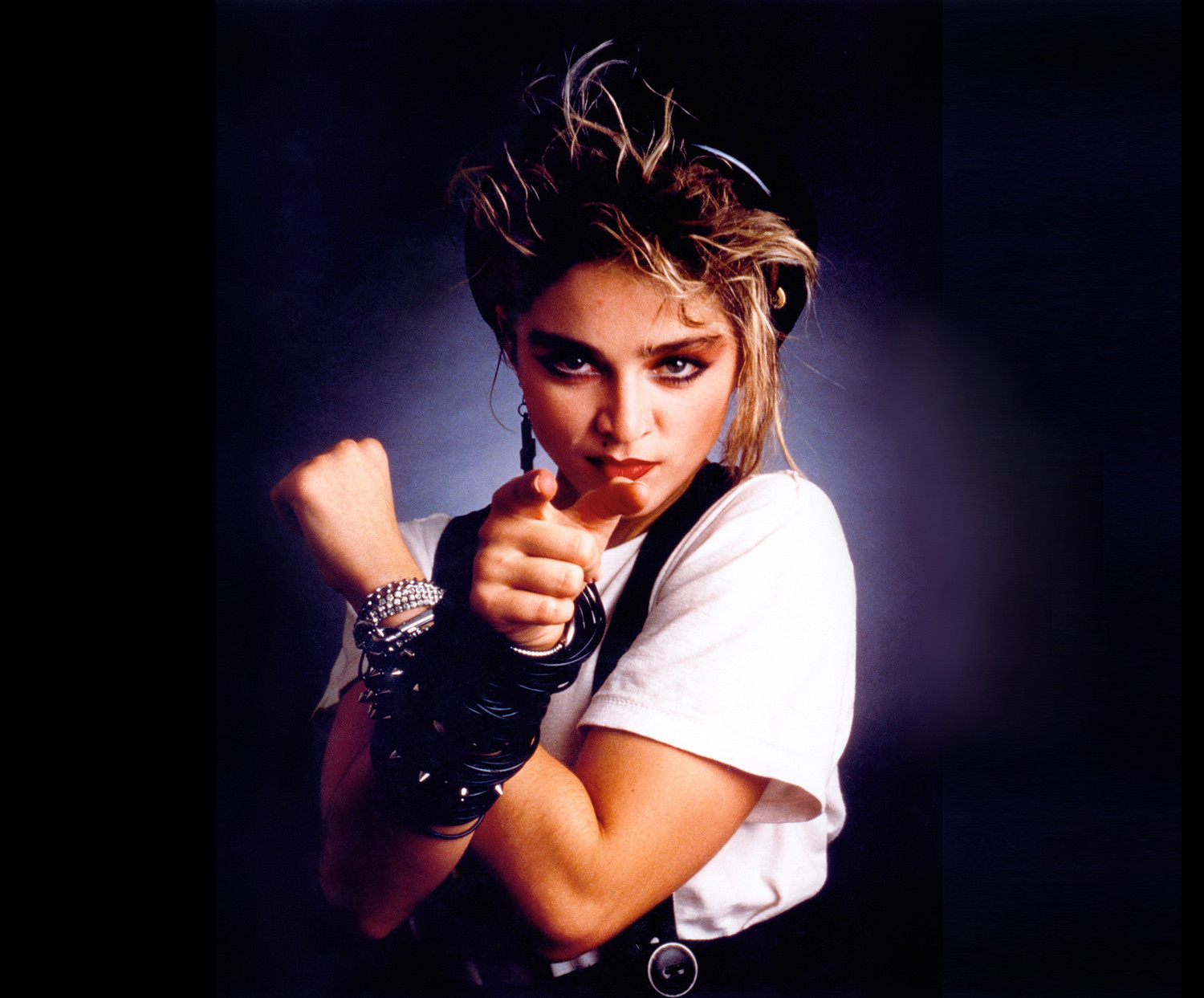 Madonna Bedtime Stories era, Human Nature music video latex and provocative imagery
Madonna Bedtime Stories era, Human Nature music video latex and provocative imagery
“Human Nature,” from Bedtime Stories, is a direct and defiant response to the media backlash Madonna faced after the Erotica era and her Sex book. Madonna stated, “The song is basically saying, ‘Don’t put me in a box, don’t pin me down, don’t tell me what I can and can’t say.’ It’s about breaking out of restraints.” The lyrics directly address the controversy, with lines like, “Did I say something wrong?/Oops, I didn’t know I couldn’t talk about sex.” Musically, “Human Nature” incorporates hip-hop and R&B elements, sampling Main Source and borrowing vocal phrasing from A Tribe Called Quest, demonstrating Madonna’s continued exploration of diverse genres and her unapologetic stance on freedom of expression.
“Drowned World/ Substitute for Love” (from ‘Ray of Light,’ 1998)
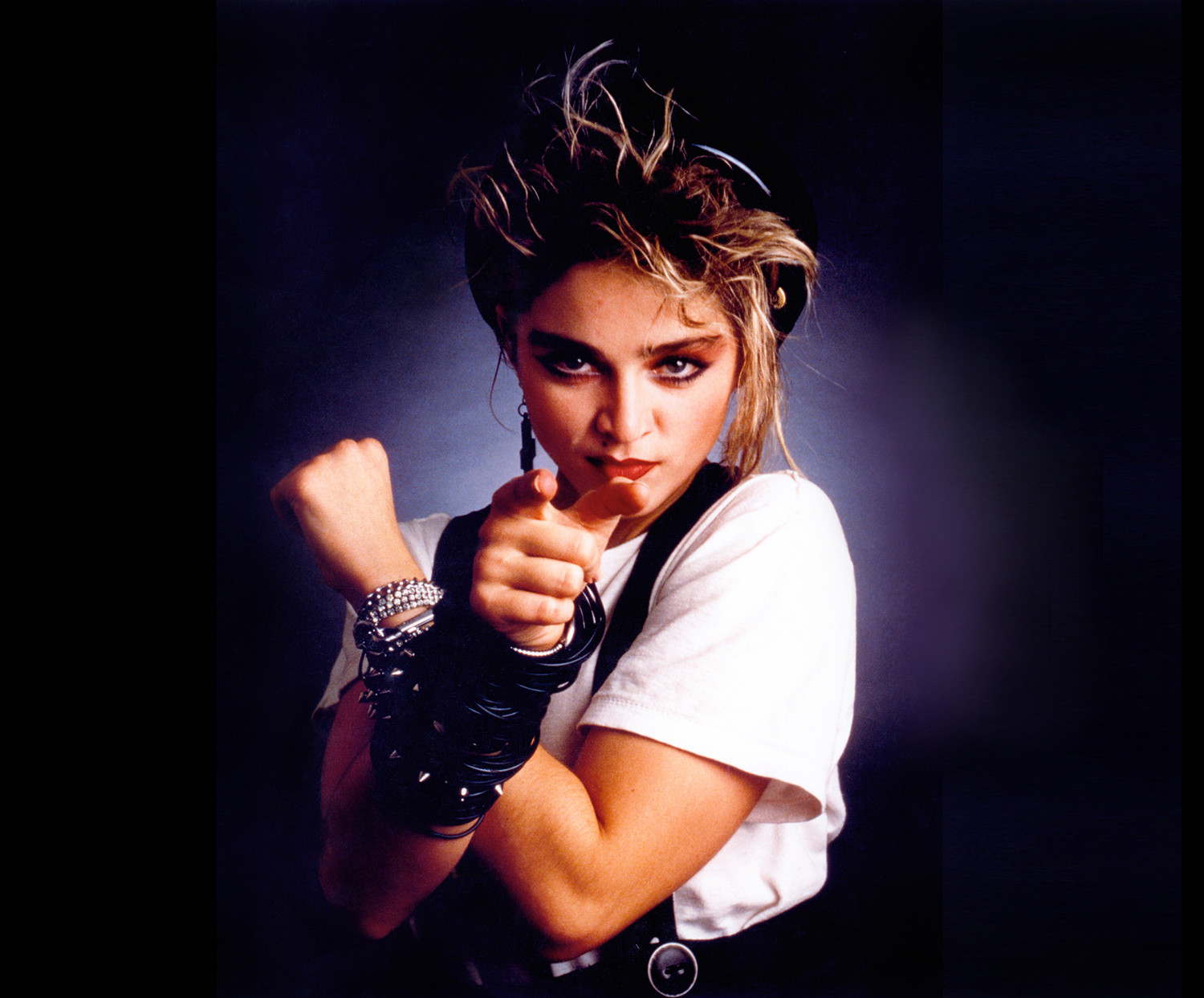 Madonna Ray of Light album cover, serene and spiritual image
Madonna Ray of Light album cover, serene and spiritual image
“Drowned World/Substitute for Love,” the opening track of Ray of Light, reflects Madonna’s personal transformation into motherhood. Between Bedtime Stories and Ray of Light, Madonna gave birth to her daughter Lourdes, a life-changing event that profoundly influenced her artistic direction. The ballad explores themes of fame, family, and personal epiphanies. Madonna explained, “I got pregnant, and the whole idea of giving birth and being responsible for another life put me in a different place. People have been obsessed with the idea that I am always reinventing myself, [but] I’d rather think that I’m slowly revealing myself,” indicating a shift from reinvention to deeper self-revelation in her music.
“What It Feels Like for a Girl” (from ‘Music’, 2000)
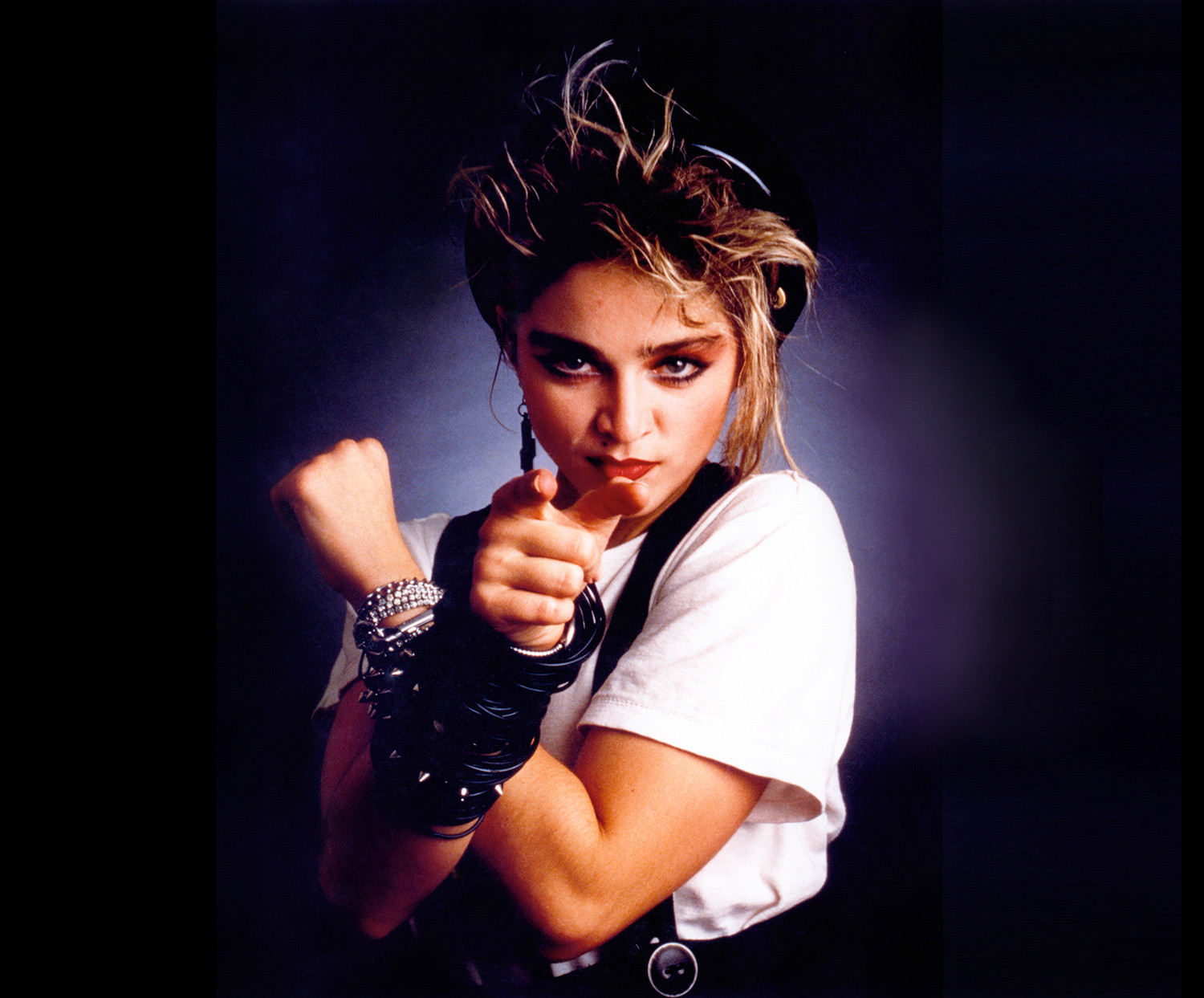 Madonna Music album era, What It Feels Like For A Girl music video controversial car crash
Madonna Music album era, What It Feels Like For A Girl music video controversial car crash
“What It Feels Like for a Girl,” from Music, is a track that sparked controversy with its Guy Ritchie-directed music video, which was banned by MTV for its violent content. The song opens with a sample from Charlotte Gainsbourg’s film The Cement Garden, meditating on gender roles. Madonna explained the song’s theme: “Our generation has been encouraged to grab life by the balls, be superindependent, and I realized that smart, sassy girls who accomplish a lot are really frightening to men… That’s also what that song is about: swallowing that bitter pill,” highlighting the song’s exploration of gender dynamics and societal expectations placed on women.
“Angel” (from ‘Like a Virgin,’ 1984)
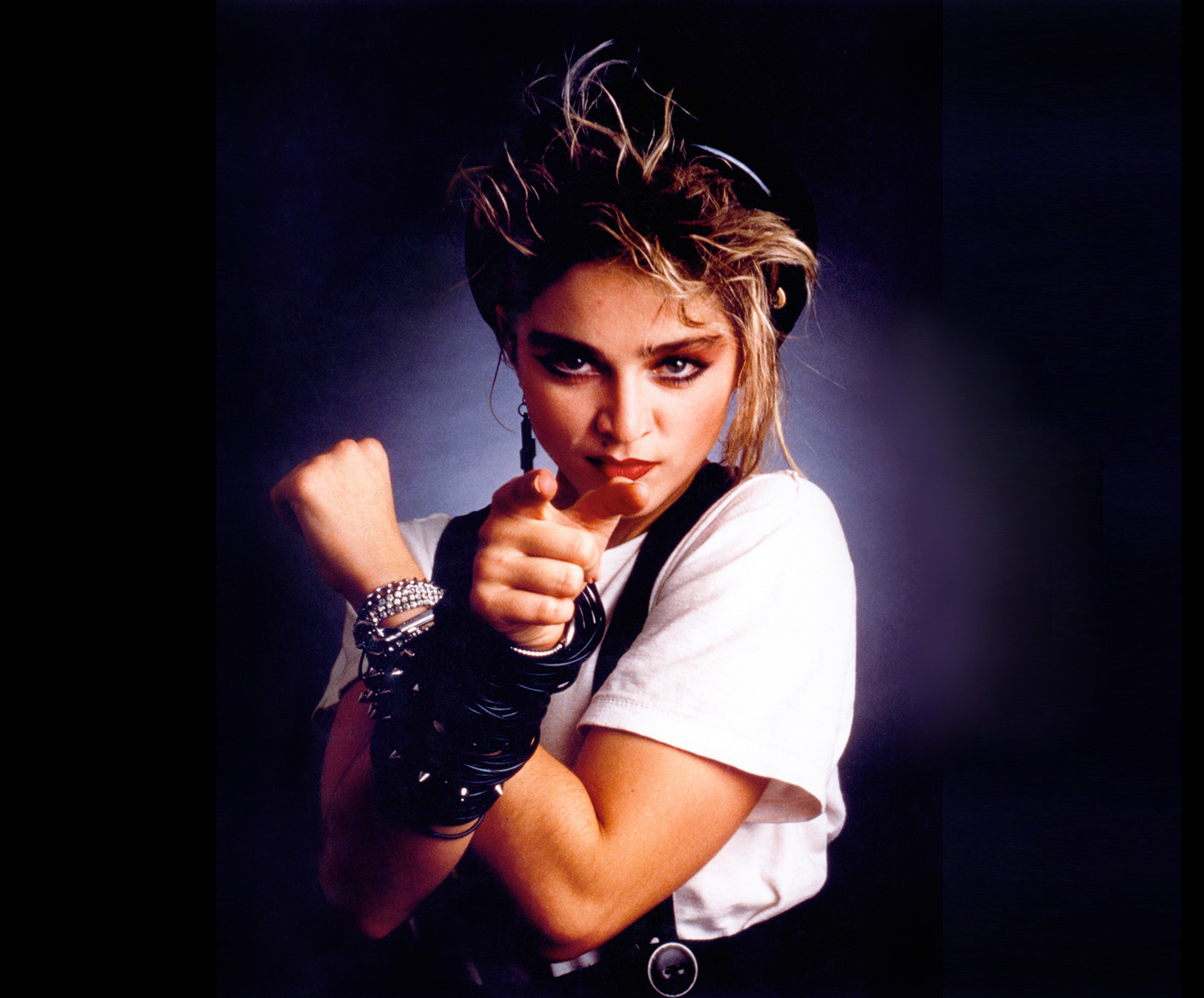 Madonna Like a Virgin album era, Angel music video heavenly and ethereal
Madonna Like a Virgin album era, Angel music video heavenly and ethereal
“Angel,” from Like a Virgin, delves into Madonna’s spiritual side, specifically her Catholic upbringing and belief in angels. Madonna once stated, “I think it’s important to call angels to you to protect you. That’s part of the ritualistic moment. The calling of angels.” This song, with its theme of heavenly love and wonder, began as a demo co-written with Stephen Bray. Despite its popularity, Madonna chose not to film a dedicated music video for “Angel,” likely due to the heavy rotation of her other videos at the time. Sire Records compiled a video using existing footage, underscoring the song’s broad appeal despite minimal promotional effort.
“Justify My Love” (from ‘The Immaculate Collection,’ 1990)
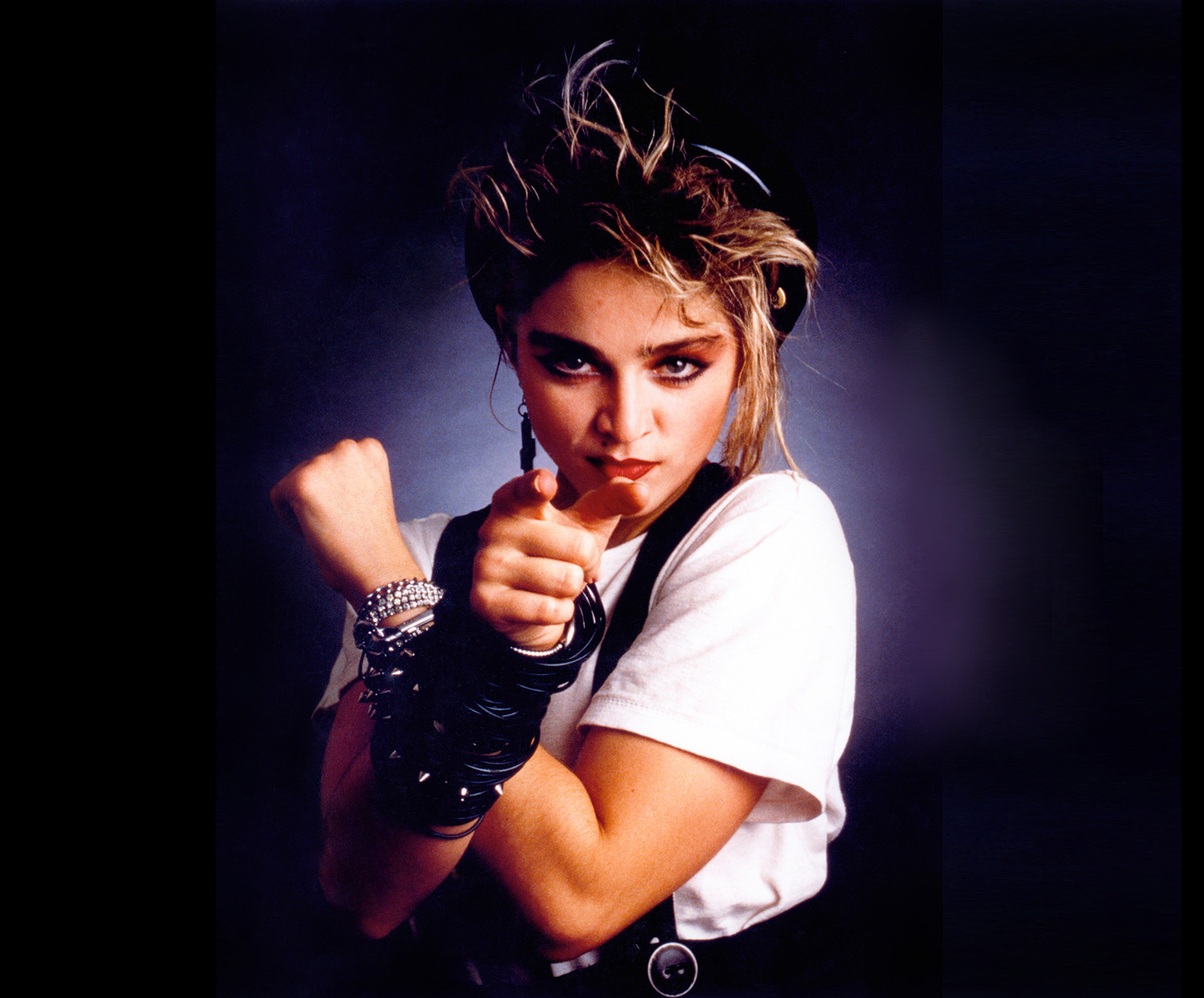 Madonna The Immaculate Collection era, Justify My Love music video black and white erotic
Madonna The Immaculate Collection era, Justify My Love music video black and white erotic
“Justify My Love,” from The Immaculate Collection, is notable for its minimalist groove and sexually suggestive lyrics, pushing boundaries and sparking controversy. Co-written by Lenny Kravitz and Ingrid Chavez, the lyrics were largely derived from an unmailed love letter Chavez wrote to Kravitz. MTV banned the song’s dreamy, erotic black and white music video, leading Madonna to defend her artistic intentions on Nightline. She explained, “We’re dealing with sexual fantasies. And being truthful and honest with our partner, and these feelings exist. I’m just dealing with the truth here,” emphasizing the song’s exploration of adult themes and sexual honesty.
“Open Your Heart” (from ‘True Blue,’ 1986)
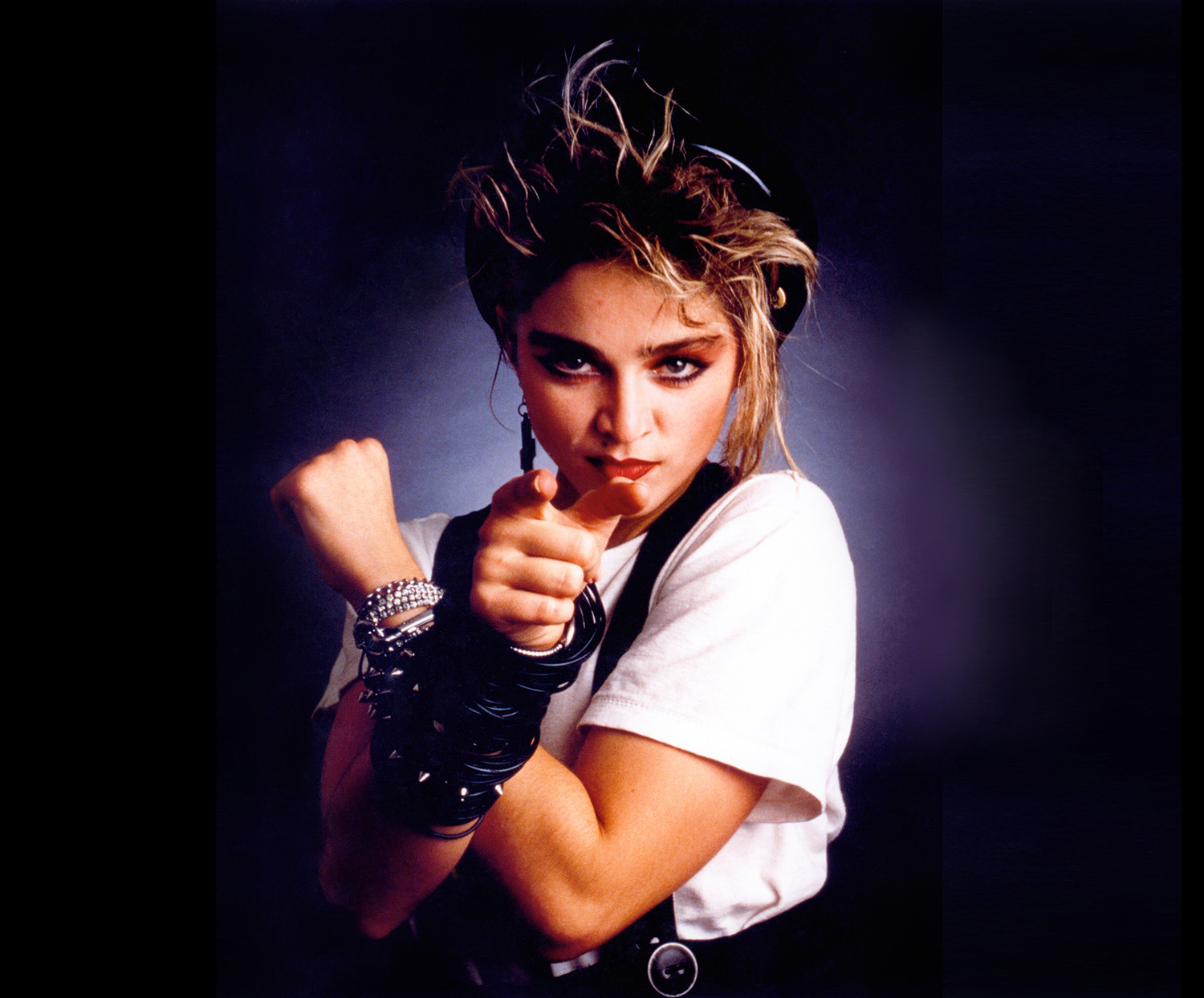 Madonna True Blue era, Open Your Heart music video peep show and playful
Madonna True Blue era, Open Your Heart music video peep show and playful
“Open Your Heart,” from True Blue, was originally conceived as a rock song called “Follow Your Heart” intended for Cyndi Lauper or The Temptations. Songwriters Gardner Cole and Peter Rafelson’s original rock version was transformed when Madonna and Patrick Leonard reworked the arrangement, adding a bass line and converting it into a quintessential 80s dance-pop track. Gardner Cole recalled that “The original didn’t fit what Madonna was doing at the time.” Paired with a striking peep-show-themed music video, “Open Your Heart” became Madonna’s third Number One single from True Blue, illustrating her skill in reinterpreting and reinventing songs.
“Dress You Up” (from ‘Like a Virgin,’ 1984)
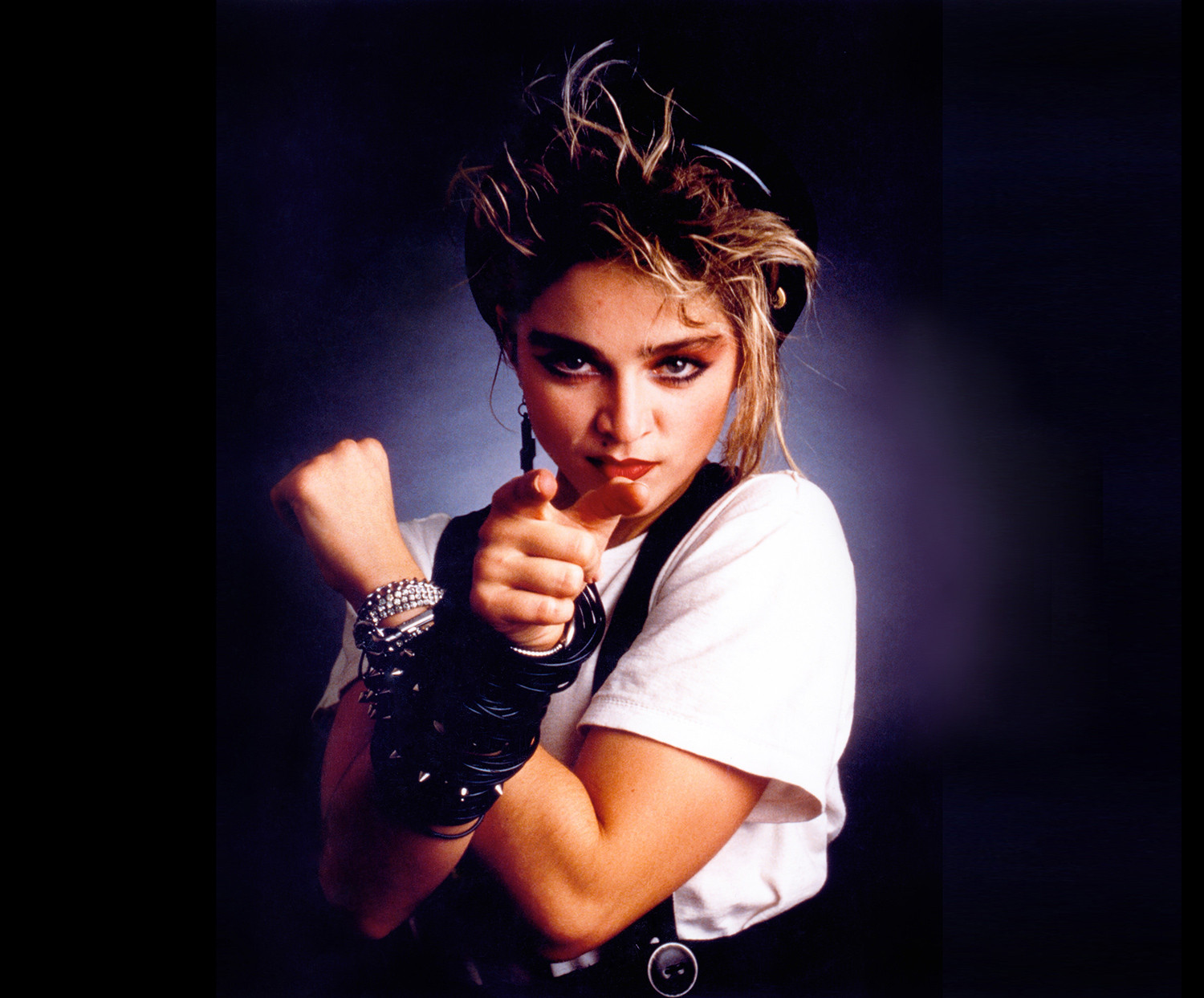 Madonna Like a Virgin album era, Dress You Up live performance from Virgin Tour
Madonna Like a Virgin album era, Dress You Up live performance from Virgin Tour
“Dress You Up,” from Like a Virgin, is an upbeat and flirtatious track produced by Nile Rodgers. Despite its PG-rated lyrics, it was controversially included in the “Filthy Fifteen” list by the Parents Music Resource Center in 1985, alongside W.A.S.P.’s “Animal (Fuck Like a Beast).” The song became a style anthem for young Madonna fans, evident in its music video—a live performance from The Virgin Tour—showing audiences emulating her lace gloves and shades fashion. Nile Rodgers described Madonna’s early impact, writing in his memoir: “In a low-res world, she was high-definition hyperrealism,” capturing her vivid and trendsetting presence.
“Promise to Try” (from ‘Like a Prayer,’ 1989)
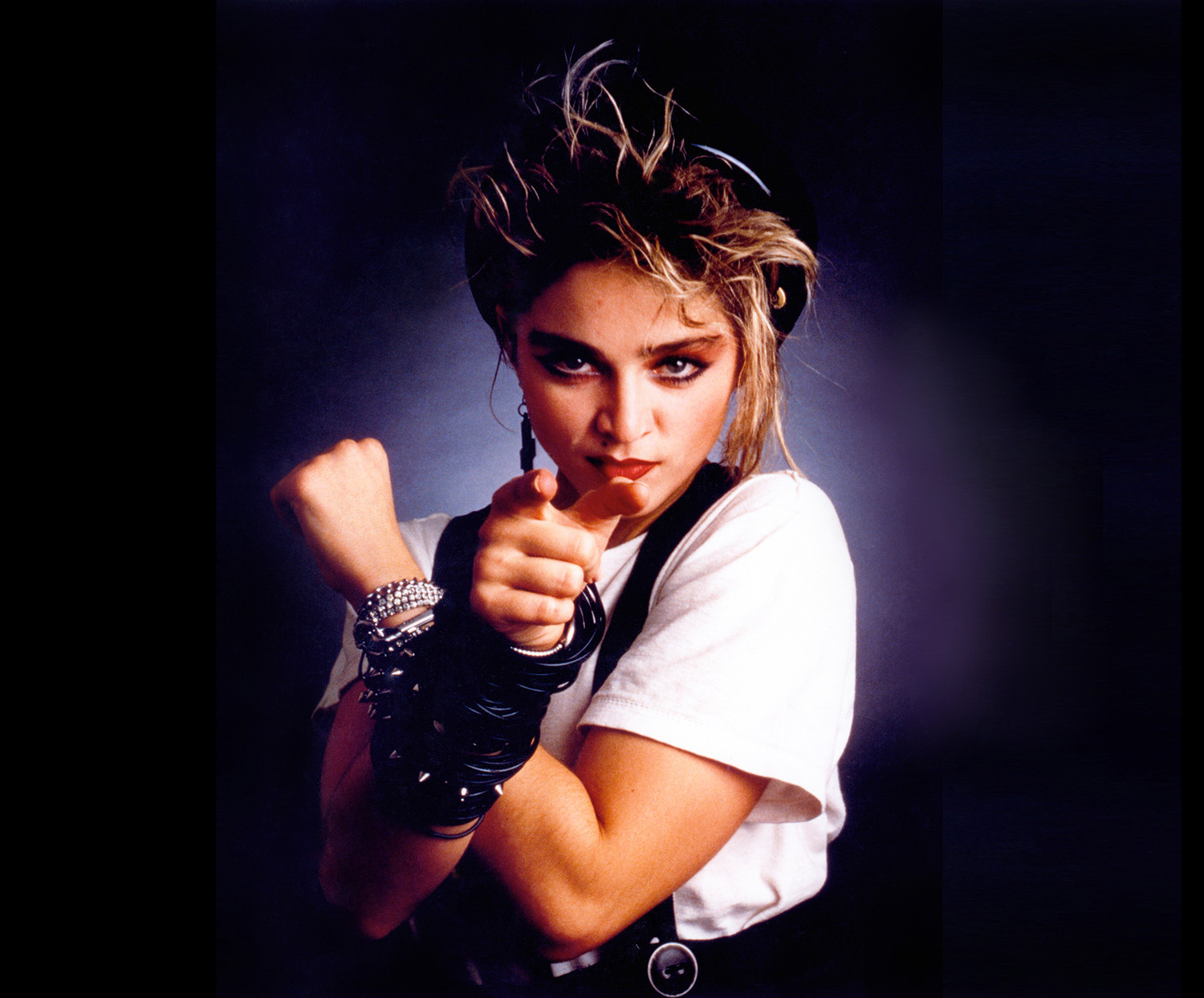 Madonna Like a Prayer album era, Promise to Try music video emotional and personal
Madonna Like a Prayer album era, Promise to Try music video emotional and personal
“Promise to Try,” from Like a Prayer, is a deeply personal piano ballad dedicated to Madonna’s mother, who passed away from breast cancer when Madonna was five. Co-written with Patrick Leonard, the song expresses grief and remembrance. Lyrics like “Little girl don’t you forget her face/Laughing away your tears/When she was the one who felt all the pain” convey a multi-layered emotional perspective. Madonna described the song as “my father talking to me,” and “it’s me talking to me,” highlighting its intimate and reflective nature. Featured in her documentary Truth or Dare during a visit to her mother’s grave, “Promise to Try” remains one of Madonna’s most emotionally vulnerable recordings.
“Material Girl” (from ‘Like a Virgin,’ 1984)
 Madonna Like a Virgin album era, Material Girl music video Marilyn Monroe inspiration
Madonna Like a Virgin album era, Material Girl music video Marilyn Monroe inspiration
“Material Girl,” from Like a Virgin, while not written by Madonna, became one of her most iconic and career-defining songs. Despite later stating, “I am not a materialistic person…[things] are not mandatory for my happiness,” she embraced the song’s playful swagger. Producer Nile Rodgers infused it with a clipped, New Wave robo-funk sound, resulting in a major hit. Rodgers initially believed “Material Girl” would be her breakthrough song, more so than “Like a Virgin.” He noted, “’Material Girl’ to me was cool, and to this day what do people call Madonna? They call her the Material Girl. They don’t call her the Virgin,” underscoring the song’s lasting impact on her public image.
“Express Yourself” (from ‘Like a Prayer,’ 1989)
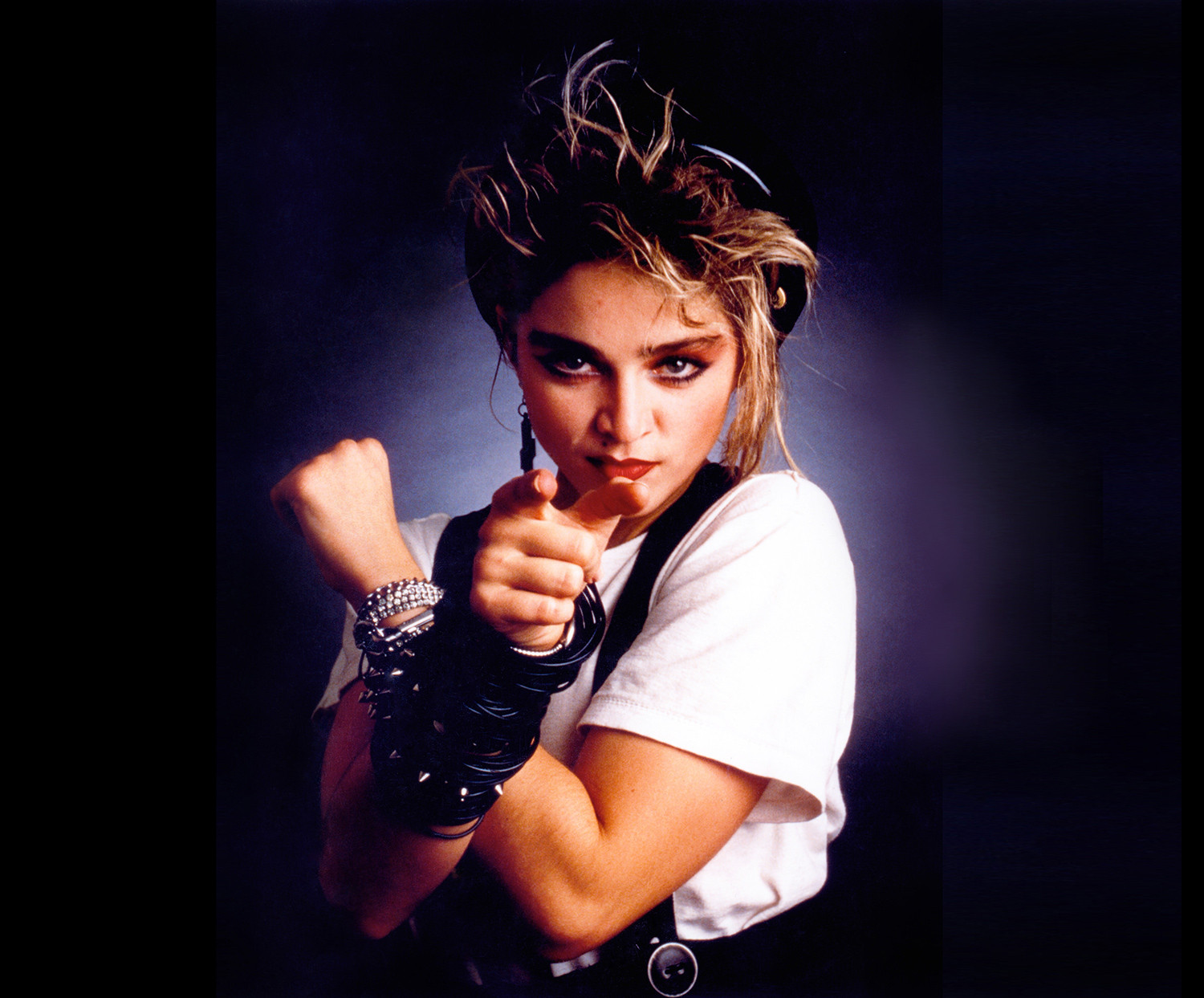 Madonna Like a Prayer era, Express Yourself music video powerful and empowering
Madonna Like a Prayer era, Express Yourself music video powerful and empowering
“Express Yourself,” from Like a Prayer, is a powerful girl-power anthem drawing inspiration from the Staple Singers’ “Respect Yourself.” Madonna urges women to be assertive in relationships with lyrics like, “If you don’t say what you want, then you’re not going to get it.” The song reached Number Two in the U.S. and its David Fincher-directed music video was the most expensive ever made at the time, featuring iconic imagery and solidifying its cultural impact. Its influence is so profound that Lady Gaga’s “Born This Way” drew strong comparisons. Madonna playfully quipped, “When I heard [it] on the radio… I said, ‘That sounds very familiar,'” acknowledging the song’s enduring legacy and influence on subsequent artists.
“Crazy for You” (from ‘Vision Quest’, 1985)
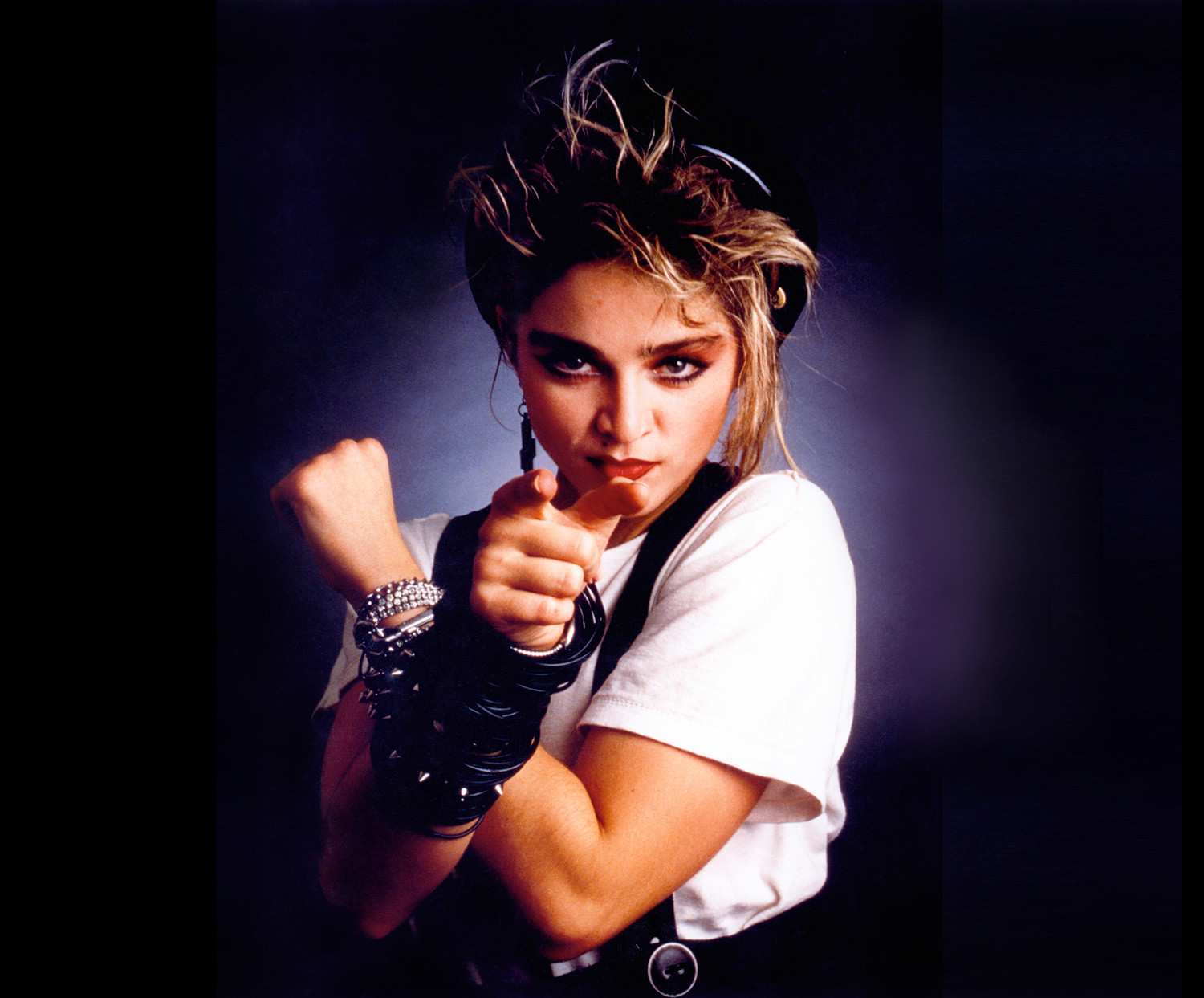 Madonna in Vision Quest movie, Crazy For You performance scene
Madonna in Vision Quest movie, Crazy For You performance scene
“Crazy for You,” from Vision Quest, became Madonna’s second Number One single, a ballad with a driving beat produced by Jellybean Benitez. Initially, songwriter John Bettis expressed skepticism about Madonna recording the song, asking, “Excuse me? Madonna? Really? Can she sing a song like that?” The song became a defining element of the film, soundtracking the romance between characters played by Matthew Modine and Linda Fiorentino, mirroring Madonna’s own crossover from underground club culture to mainstream pop phenomenon. The movie features Madonna performing the song in her first on-screen appearance, further cementing its association with her breakthrough into mainstream fame.
“Burning Up” (from ‘Madonna’, 1983)
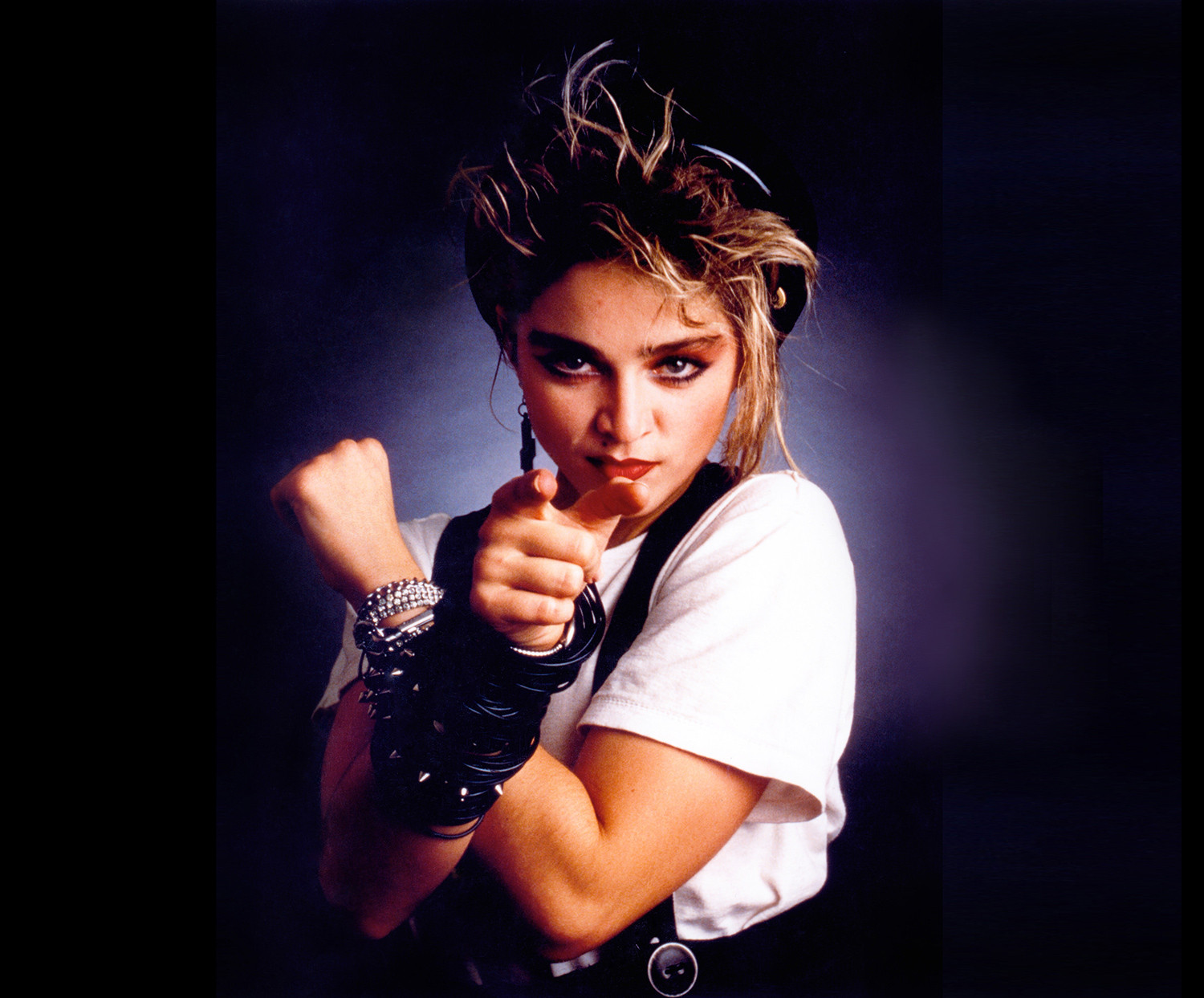 Madonna's first album era, Burning Up single cover with edgy style
Madonna's first album era, Burning Up single cover with edgy style
“Burning Up,” from Madonna’s debut album, was an early club banger that underwent several transformations. Initially part of a four-song demo, it was re-recorded with producer Reggie Lucas and remixed by Jellybean Benitez, resulting in a freestyle electro-jam with rock guitar elements. The music video for “Burning Up” featured Madonna in a provocative and stylish persona, writhing on a dark suburban road in a short skirt and crucifix jewelry, propelling the song up the dance charts. Jellybean Benitez recognized her star potential early on, saying, “I knew she was gonna be big. That her album could go gold. I never thought it could go six-times platinum,” highlighting the unexpected scale of Madonna’s future success.
“Music” (from ‘Music’, 2000)
 Madonna Music album cover, stylized and futuristic design
Madonna Music album cover, stylized and futuristic design
“Music,” from the Music album, explicitly celebrates the unifying power of music. Madonna’s inspiration came from a Sting concert where she observed the audience’s enthusiastic reaction to his older Police hits. “Everyone was practically holding hands… I mean, it really moved me,” she told Rolling Stone. “And I thought, ‘That’s what music does to people.’” Produced by French dance music producer Mirwais, the glitchy disco track became a Number One hit. Its music video, featuring Sacha Baron Cohen, humorously depicted Madonna bridging social divides, even while pregnant, underscoring the song’s message of music’s universal appeal and ability to unite diverse groups.
“Ray of Light” (from ‘Ray of Light,’ 1998)
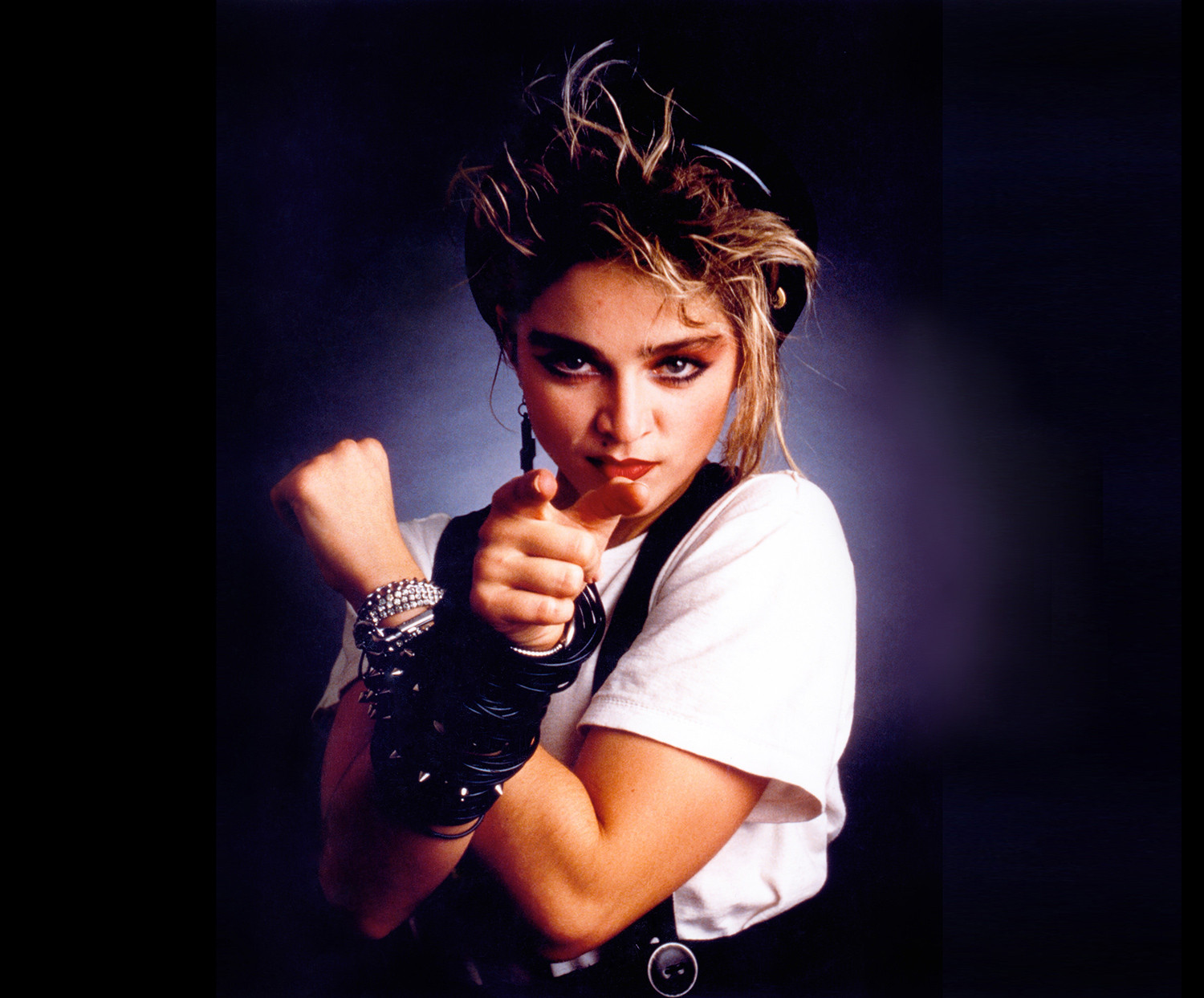 Madonna Ray of Light album era, Ray of Light music video fast-paced and energetic
Madonna Ray of Light album era, Ray of Light music video fast-paced and energetic
“Ray of Light,” the title track from the Ray of Light album, marked a significant sonic evolution for Madonna into electronica. Producer William Orbit sent Madonna a DAT tape with 13 tracks, including an interpolation of “Sepheryn,” a Seventies psych-folk song. Madonna adapted the lyrics to express a sense of “wonderment” and spiritual awakening. “A ray of light to me is hope. We are zooming forward, but that doesn’t mean you can lose touch with the spiritual side of things.” The song’s complex breakbeats, guitars, and organs, combined with Madonna’s powerful vocals—enhanced by vocal training for Evita—created a groundbreaking sound. Orbit emphasized Madonna’s production role, stating, “Madonna’s production involvement was a major factor in this record, and it’s something that shouldn’t be overlooked,” highlighting her artistic contribution to its innovative sound.
“Live to Tell” (from ‘True Blue,’ 1986)
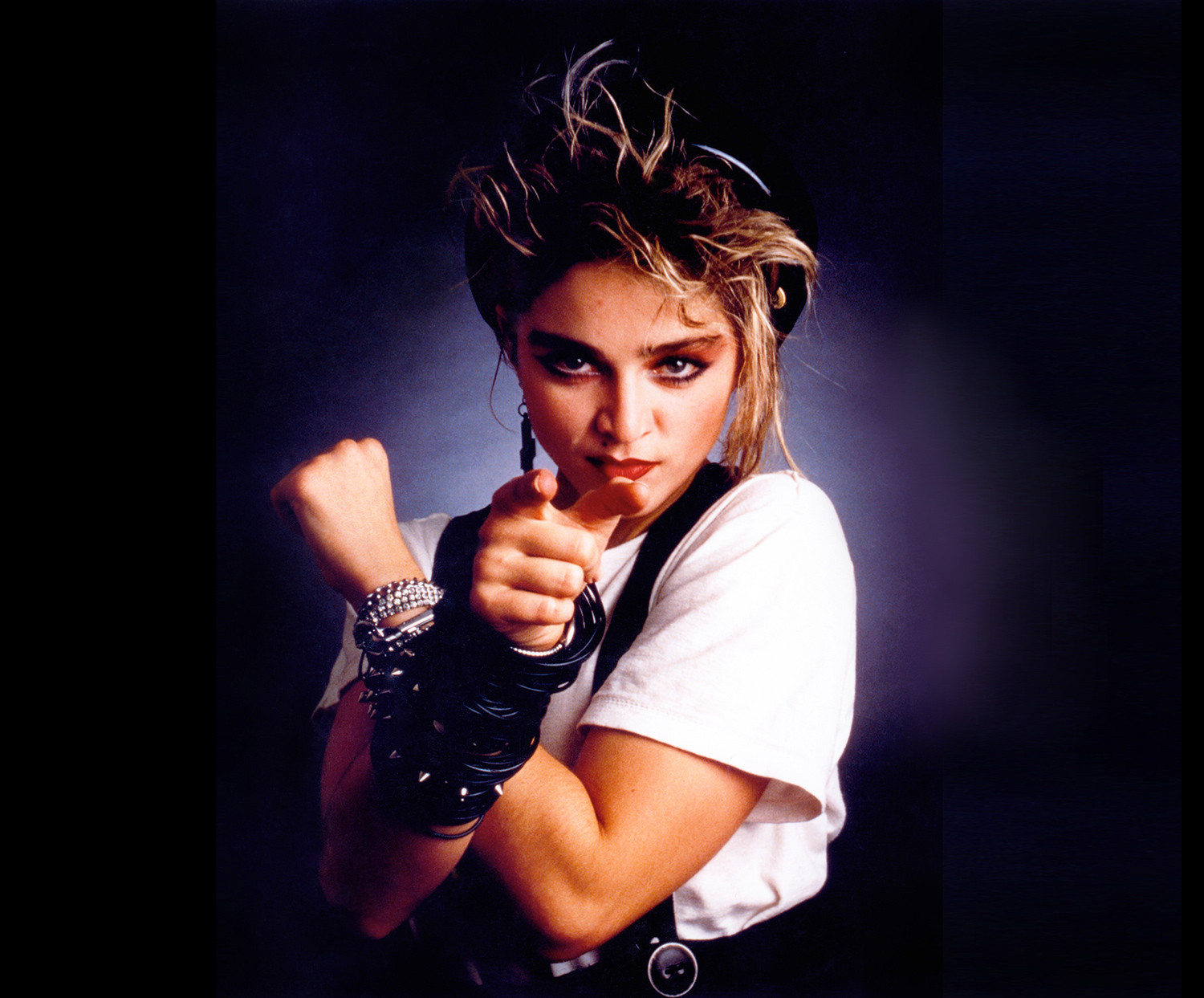 Madonna True Blue era, Live to Tell music video somber and reflective
Madonna True Blue era, Live to Tell music video somber and reflective
“Live to Tell,” from True Blue, introduced a more mature and introspective side of Madonna. This moody ballad, with its unconventional structure and haunting lyrics, explores themes of hidden secrets and trauma. Madonna wrote the lyrics to Patrick Leonard’s track quickly and recorded the vocals in a single take, capturing its raw emotional intensity. Initially considered a commercial risk, “Live to Tell” became her third Number One hit, validating her artistic risks. The song’s ambiguous lyrics about a hidden secret sparked various interpretations, from heartbreak to abuse, but Madonna intentionally kept its meaning open-ended, stating, “It could be about something in an F. Scott Fitzgerald novel or a story that I heard once. It’s true, but it’s not necessarily autobiographical,” preserving its universal emotional resonance.
“Hung Up” (from ‘Confessions on a Dance Floor,’ 2005)
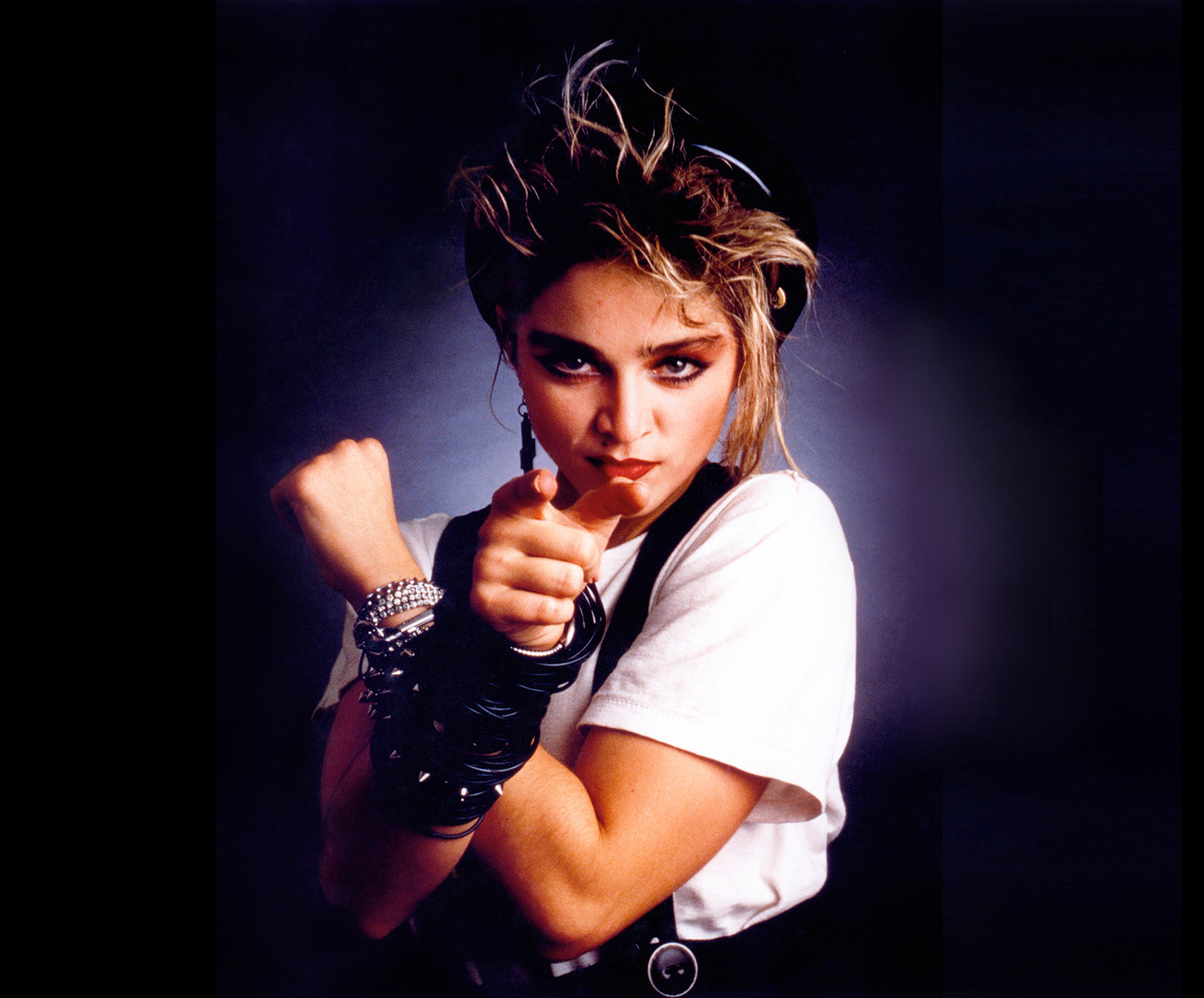 Madonna Confessions on a Dance Floor album cover, disco and dance-focused image
Madonna Confessions on a Dance Floor album cover, disco and dance-focused image
“Hung Up,” from Confessions on a Dance Floor, marked Madonna’s energetic return to dance-focused music, sampling ABBA’s “Gimme! Gimme! Gimme! (A Man After Midnight).” Decades after declaring her debut album “a total aerobics record,” Madonna proved her continued mastery of dance-pop. Recorded in producer Stuart Price’s London apartment, “Hung Up” revived the stripped-down electro energy of her early records. The sample of ABBA’s synth hook provided a recognizable and infectious element. Madonna’s looped vocals and sped-up clock sound effects enhance the song’s frenetic energy, creating a dance-floor time warp. “Hung Up” is a testament to Madonna’s enduring ability to innovate within the dance genre and create hits that resonate across generations.
“Like a Virgin” (from ‘Like a Virgin,’ 1984)
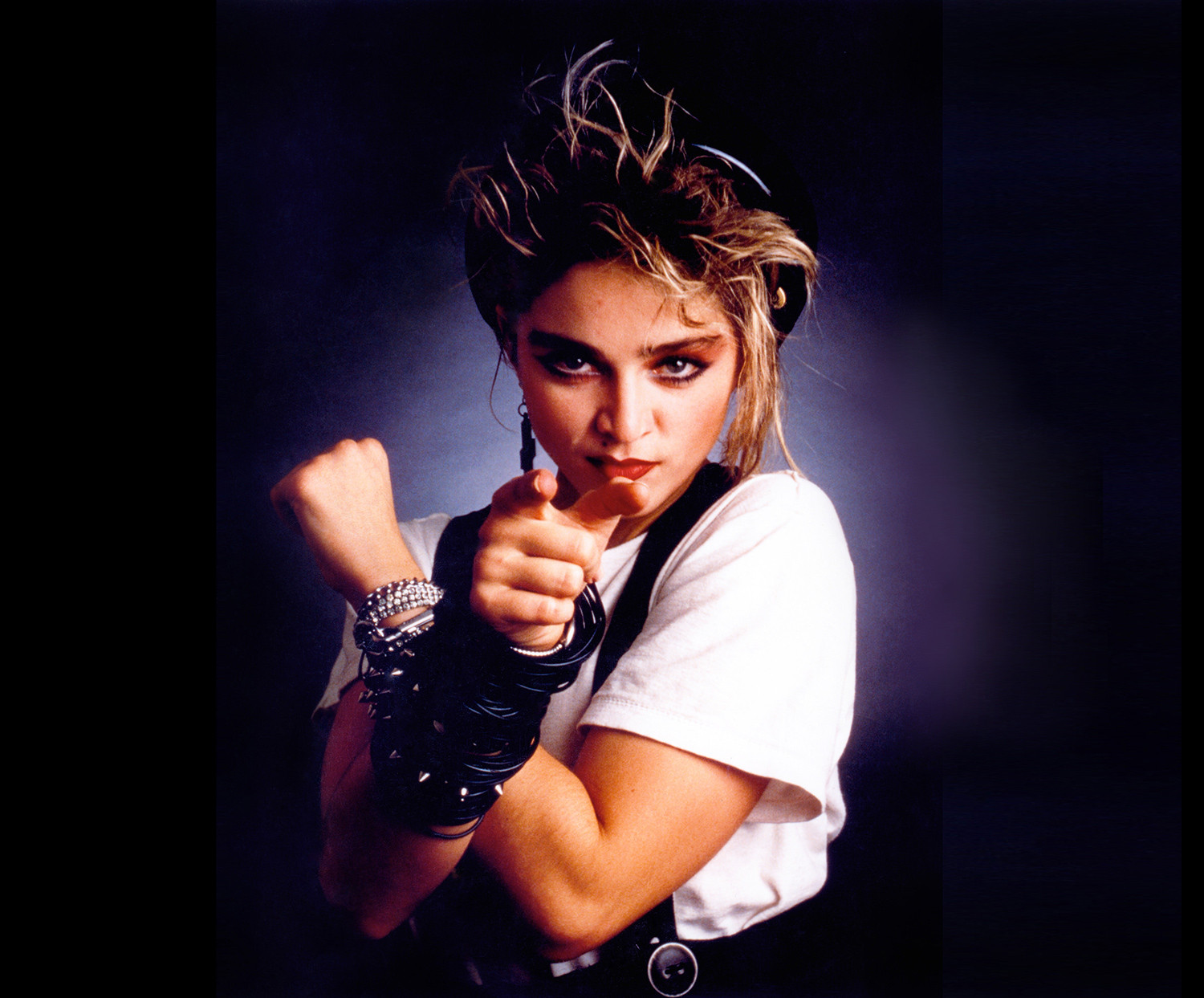 Madonna Like a Virgin album cover, iconic wedding dress and provocative pose
Madonna Like a Virgin album cover, iconic wedding dress and provocative pose
“Like a Virgin,” the title track from Like a Virgin, remains one of Madonna’s most iconic and controversial songs, saturated with implied sexuality despite minimal explicit lyrical content. Written by Billy Steinberg and Tom Kelly, the songwriters were prepared to change the title, but Madonna embraced it. Her performance at the 1984 MTV Video Music Awards, dressed in a wedding gown and provocatively writhing on stage, became a defining pop culture moment. Madonna addressed the song’s reception, stating, “when I did the song, to me, I was singing about how something made me feel a certain way – brand-new and fresh – and everyone else interpreted it as, ‘I don’t want to be a virgin anymore. Fuck my brains out!’ That’s not what I sang at all,” highlighting the gap between her intended meaning and public interpretation, yet cementing its status as a sexually charged anthem.
“Borderline” (from ‘Madonna,’ 1983)
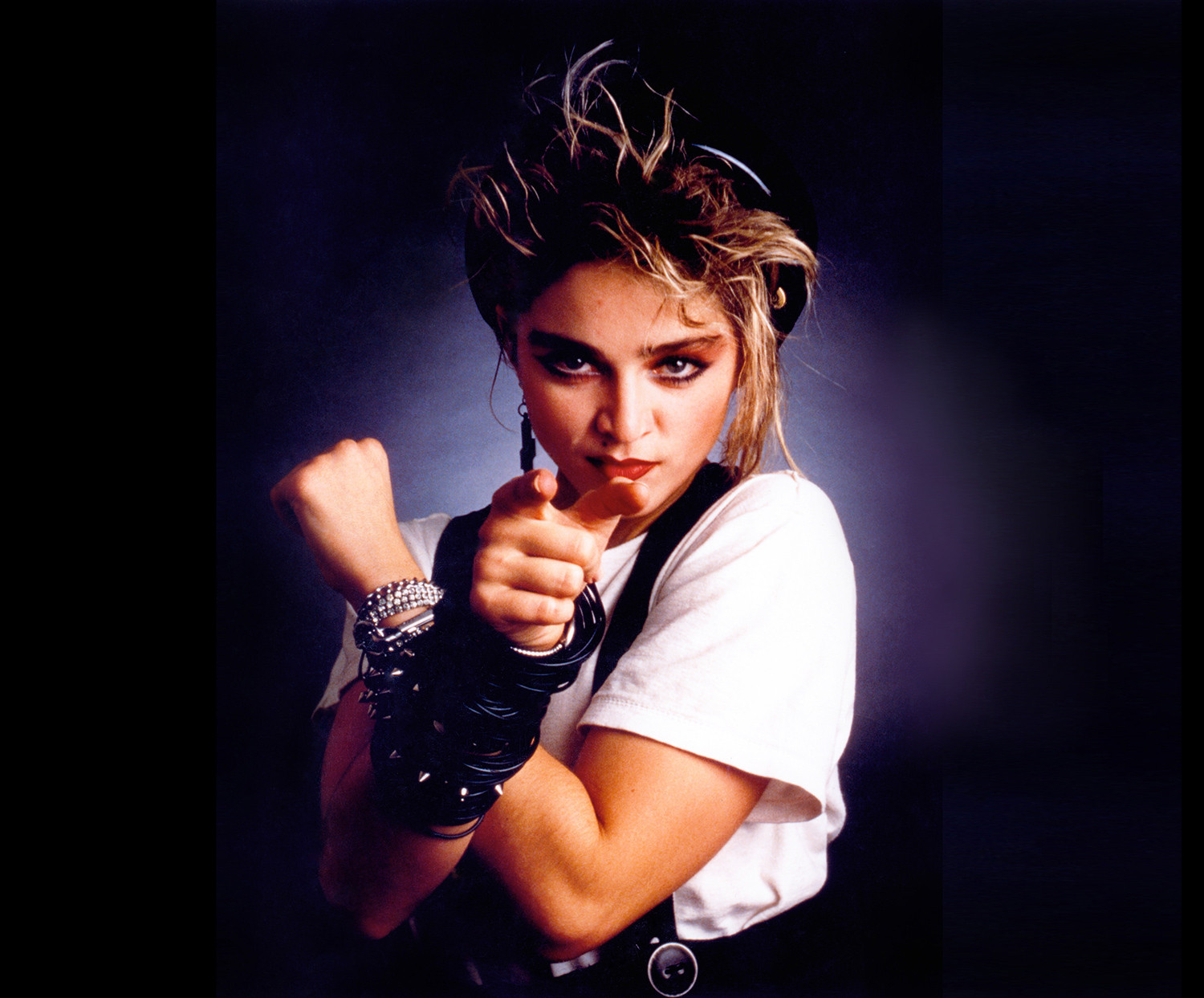 Madonna's first album era, Borderline music video interracial romance theme
Madonna's first album era, Borderline music video interracial romance theme
“Borderline,” from Madonna’s debut album, was her breakthrough hit, propelling her from urban radio to mainstream pop stardom. In March 1984, Madonna attended a Duran Duran concert unrecognized, but months later, she was headlining herself, a rise fueled by “Borderline.” Created with R&B producer Reggie Lucas, “Borderline” blended downtown cool with pop sensibilities. Lucas, who had worked with jazz artists like Miles Davis and Sun Ra, was unfazed by Madonna’s style, noting, “She wasn’t the weirdest person I’d ever met, you know? I’d worked with Sun Ra! So after hanging out with the Heliocentric Worlds of Sun Ra, Madonna didn’t seem particularly avant-garde.” The song’s interracial love story music video further established Madonna’s style and appeal to MTV audiences. She revisited “Borderline” on her 2008 tour with a punk rock electric guitar version, showcasing its enduring versatility.
“Vogue” (from ‘I’m Breathless,’ 1990)
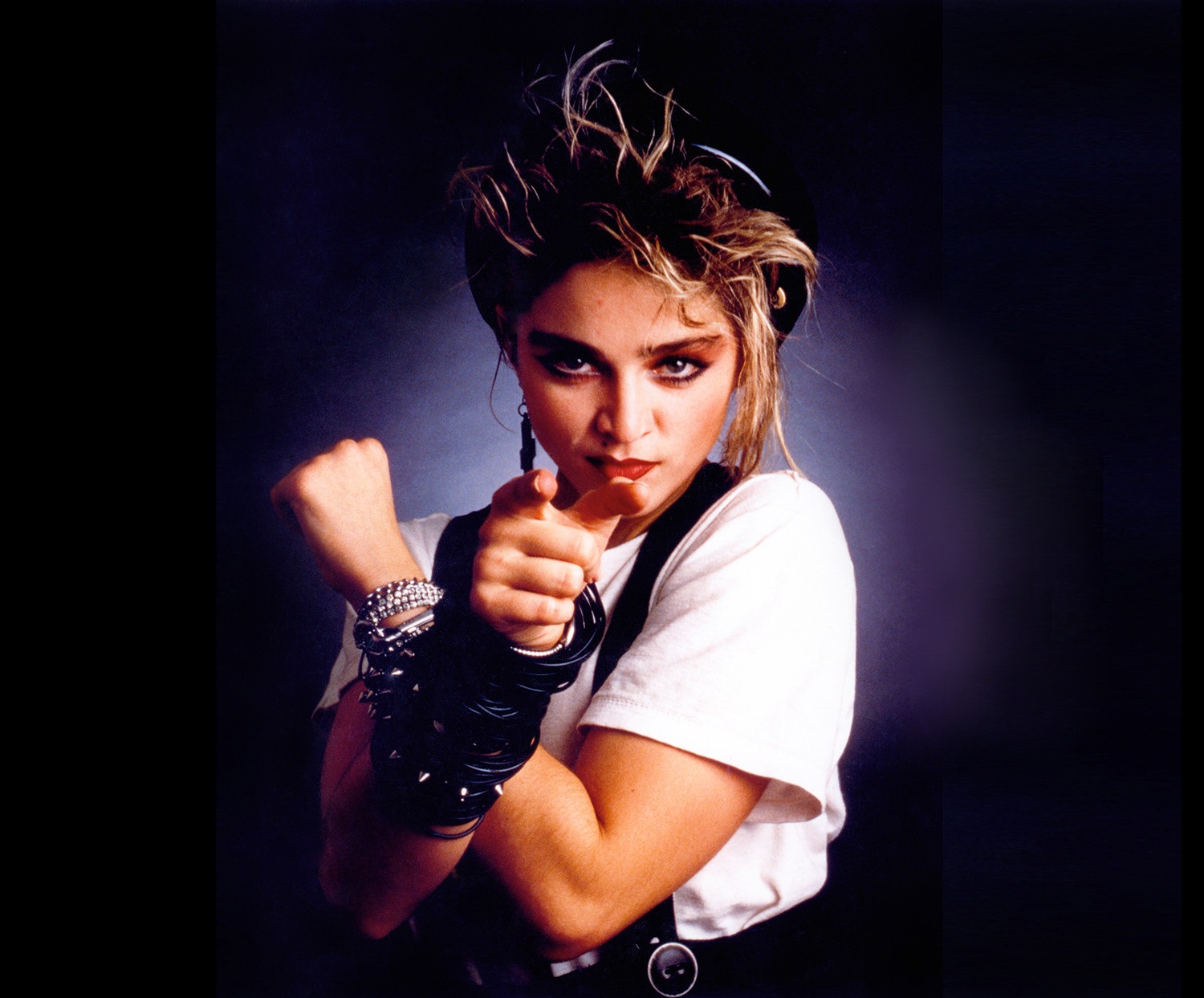 Madonna I'm Breathless era, Vogue music video black and white Hollywood glam
Madonna I'm Breathless era, Vogue music video black and white Hollywood glam
“Vogue,” from I’m Breathless, is Madonna’s iconic tribute to dance, fashion, and self-expression, celebrating New York’s ballroom culture. This house-beat-driven track name-checks Hollywood legends and emphasizes the power of dance and posing as forms of self-creation. “Beauty’s where you find it,” Madonna proclaims, highlighting inclusivity and the democratization of stardom through dance. Inspired by New York’s gay ball scene, which was later documented in Paris Is Burning, Madonna acknowledged, “I was going to Sound Factory and checking out these dancers who were all doing this new style of dancing called ‘voguing.’ And Shep Pettibone, who co-produced ‘Vogue’ with me, used to DJ there.” During the Reagan-Bush era, she used “Vogue” politically, turning it into a Rock the Vote ad with lyrics promoting freedom of speech, underscoring its cultural and political significance.
“Into the Groove” (Non-album single, 1985)
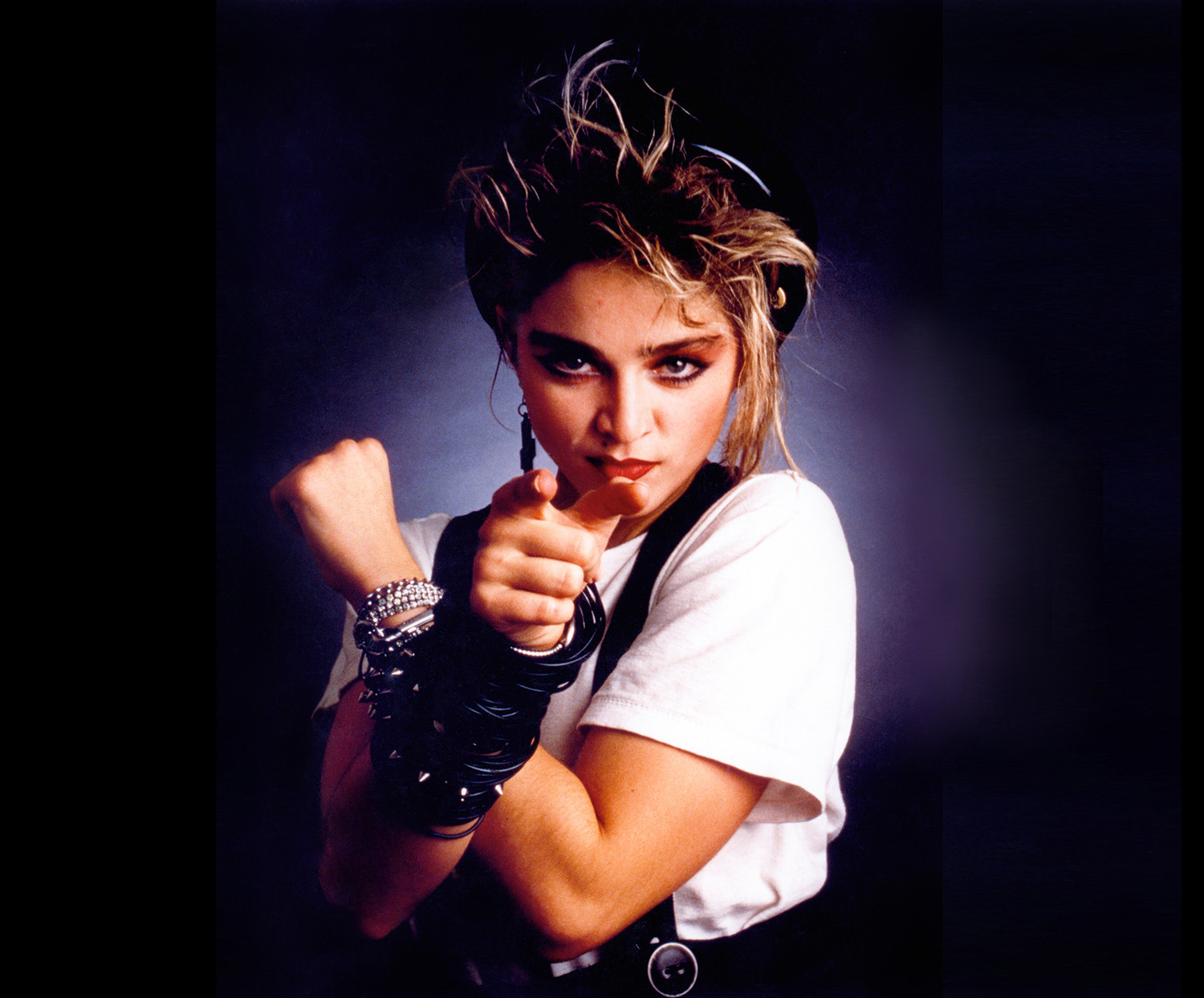 Madonna Desperately Seeking Susan movie, Into The Groove scene in club
Madonna Desperately Seeking Susan movie, Into The Groove scene in club
“Into the Groove,” a non-album single from 1985, is Madonna’s definitive dance track, born from her early struggles in New York City. Reflecting on her time squatting and experiencing hardship, she explained, “It was the garbage can in the Music Building on Eighth Avenue, where I lived with Steve Bray, the guy I write songs with.” Madonna and Bray created “Into the Groove” as an eight-track demo, capturing a raw, streetwise energy. Featured in her movie Desperately Seeking Susan, the song unexpectedly became a radio hit. Its low-budget demo sound, with raw breakbeats and Madonna’s urgent vocals, contributes to its enduring appeal as a quintessential dance anthem. “Into the Groove” has remained a radio staple, celebrated for its raw energy and dance-floor liberation.
“Like a Prayer” (from ‘Like a Prayer,’ 1989)
 Madonna Like a Prayer album cover, religious and controversial imagery
Madonna Like a Prayer album cover, religious and controversial imagery
“Like a Prayer,” the title track from Like a Prayer, is widely considered Madonna’s magnum opus, exploring the complex intersection of sexuality and spirituality. This gospel-disco smash blends religious and erotic themes, evident in lyrics like “I’m down on my knees/I wanna take you there,” which can be interpreted as both prayer and sexual desire. Madonna stated, “I pray when I’m in trouble or when I’m happy. When I feel any kind of extreme,” emphasizing the song’s exploration of intense emotional and spiritual states. Debuting as a Pepsi ad, the song’s controversial music video, featuring religious iconography, burning crosses, and sensual imagery, sparked immediate backlash and led to Pepsi pulling the ad campaign. Despite the controversy, or perhaps because of it, “Like a Prayer” became a cultural phenomenon, encapsulating Madonna’s musical and emotional extremes in a groundbreaking and enduring song.

